

What Is Creative Writing? (Ultimate Guide + 20 Examples)
Creative writing begins with a blank page and the courage to fill it with the stories only you can tell.
I face this intimidating blank page daily–and I have for the better part of 20+ years.
In this guide, you’ll learn all the ins and outs of creative writing with tons of examples.
What Is Creative Writing (Long Description)?
Creative Writing is the art of using words to express ideas and emotions in imaginative ways. It encompasses various forms including novels, poetry, and plays, focusing on narrative craft, character development, and the use of literary tropes.

Table of Contents
Let’s expand on that definition a bit.
Creative writing is an art form that transcends traditional literature boundaries.
It includes professional, journalistic, academic, and technical writing. This type of writing emphasizes narrative craft, character development, and literary tropes. It also explores poetry and poetics traditions.
In essence, creative writing lets you express ideas and emotions uniquely and imaginatively.
It’s about the freedom to invent worlds, characters, and stories. These creations evoke a spectrum of emotions in readers.
Creative writing covers fiction, poetry, and everything in between.
It allows writers to express inner thoughts and feelings. Often, it reflects human experiences through a fabricated lens.
Types of Creative Writing
There are many types of creative writing that we need to explain.
Some of the most common types:
- Short stories
- Screenplays
- Flash fiction
- Creative Nonfiction
Short Stories (The Brief Escape)
Short stories are like narrative treasures.
They are compact but impactful, telling a full story within a limited word count. These tales often focus on a single character or a crucial moment.
Short stories are known for their brevity.
They deliver emotion and insight in a concise yet powerful package. This format is ideal for exploring diverse genres, themes, and characters. It leaves a lasting impression on readers.
Example: Emma discovers an old photo of her smiling grandmother. It’s a rarity. Through flashbacks, Emma learns about her grandmother’s wartime love story. She comes to understand her grandmother’s resilience and the value of joy.
Novels (The Long Journey)
Novels are extensive explorations of character, plot, and setting.
They span thousands of words, giving writers the space to create entire worlds. Novels can weave complex stories across various themes and timelines.
The length of a novel allows for deep narrative and character development.
Readers get an immersive experience.
Example: Across the Divide tells of two siblings separated in childhood. They grow up in different cultures. Their reunion highlights the strength of family bonds, despite distance and differences.
Poetry (The Soul’s Language)
Poetry expresses ideas and emotions through rhythm, sound, and word beauty.
It distills emotions and thoughts into verses. Poetry often uses metaphors, similes, and figurative language to reach the reader’s heart and mind.
Poetry ranges from structured forms, like sonnets, to free verse.
The latter breaks away from traditional formats for more expressive thought.
Example: Whispers of Dawn is a poem collection capturing morning’s quiet moments. “First Light” personifies dawn as a painter. It brings colors of hope and renewal to the world.
Plays (The Dramatic Dialogue)
Plays are meant for performance. They bring characters and conflicts to life through dialogue and action.
This format uniquely explores human relationships and societal issues.
Playwrights face the challenge of conveying setting, emotion, and plot through dialogue and directions.
Example: Echoes of Tomorrow is set in a dystopian future. Memories can be bought and sold. It follows siblings on a quest to retrieve their stolen memories. They learn the cost of living in a world where the past has a price.
Screenplays (Cinema’s Blueprint)
Screenplays outline narratives for films and TV shows.
They require an understanding of visual storytelling, pacing, and dialogue. Screenplays must fit film production constraints.
Example: The Last Light is a screenplay for a sci-fi film. Humanity’s survivors on a dying Earth seek a new planet. The story focuses on spacecraft Argo’s crew as they face mission challenges and internal dynamics.
Memoirs (The Personal Journey)
Memoirs provide insight into an author’s life, focusing on personal experiences and emotional journeys.
They differ from autobiographies by concentrating on specific themes or events.
Memoirs invite readers into the author’s world.
They share lessons learned and hardships overcome.
Example: Under the Mango Tree is a memoir by Maria Gomez. It shares her childhood memories in rural Colombia. The mango tree in their yard symbolizes home, growth, and nostalgia. Maria reflects on her journey to a new life in America.
Flash Fiction (The Quick Twist)
Flash fiction tells stories in under 1,000 words.
It’s about crafting compelling narratives concisely. Each word in flash fiction must count, often leading to a twist.
This format captures life’s vivid moments, delivering quick, impactful insights.
Example: The Last Message features an astronaut’s final Earth message as her spacecraft drifts away. In 500 words, it explores isolation, hope, and the desire to connect against all odds.
Creative Nonfiction (The Factual Tale)
Creative nonfiction combines factual accuracy with creative storytelling.
This genre covers real events, people, and places with a twist. It uses descriptive language and narrative arcs to make true stories engaging.
Creative nonfiction includes biographies, essays, and travelogues.
Example: Echoes of Everest follows the author’s Mount Everest climb. It mixes factual details with personal reflections and the history of past climbers. The narrative captures the climb’s beauty and challenges, offering an immersive experience.
Fantasy (The World Beyond)
Fantasy transports readers to magical and mythical worlds.
It explores themes like good vs. evil and heroism in unreal settings. Fantasy requires careful world-building to create believable yet fantastic realms.
Example: The Crystal of Azmar tells of a young girl destined to save her world from darkness. She learns she’s the last sorceress in a forgotten lineage. Her journey involves mastering powers, forming alliances, and uncovering ancient kingdom myths.
Science Fiction (The Future Imagined)
Science fiction delves into futuristic and scientific themes.
It questions the impact of advancements on society and individuals.
Science fiction ranges from speculative to hard sci-fi, focusing on plausible futures.
Example: When the Stars Whisper is set in a future where humanity communicates with distant galaxies. It centers on a scientist who finds an alien message. This discovery prompts a deep look at humanity’s universe role and interstellar communication.
Watch this great video that explores the question, “What is creative writing?” and “How to get started?”:
What Are the 5 Cs of Creative Writing?
The 5 Cs of creative writing are fundamental pillars.
They guide writers to produce compelling and impactful work. These principles—Clarity, Coherence, Conciseness, Creativity, and Consistency—help craft stories that engage and entertain.
They also resonate deeply with readers. Let’s explore each of these critical components.
Clarity makes your writing understandable and accessible.
It involves choosing the right words and constructing clear sentences. Your narrative should be easy to follow.
In creative writing, clarity means conveying complex ideas in a digestible and enjoyable way.
Coherence ensures your writing flows logically.
It’s crucial for maintaining the reader’s interest. Characters should develop believably, and plots should progress logically. This makes the narrative feel cohesive.
Conciseness
Conciseness is about expressing ideas succinctly.
It’s being economical with words and avoiding redundancy. This principle helps maintain pace and tension, engaging readers throughout the story.
Creativity is the heart of creative writing.
It allows writers to invent new worlds and create memorable characters. Creativity involves originality and imagination. It’s seeing the world in unique ways and sharing that vision.
Consistency
Consistency maintains a uniform tone, style, and voice.
It means being faithful to the world you’ve created. Characters should act true to their development. This builds trust with readers, making your story immersive and believable.
Is Creative Writing Easy?
Creative writing is both rewarding and challenging.
Crafting stories from your imagination involves more than just words on a page. It requires discipline and a deep understanding of language and narrative structure.
Exploring complex characters and themes is also key.
Refining and revising your work is crucial for developing your voice.
The ease of creative writing varies. Some find the freedom of expression liberating.
Others struggle with writer’s block or plot development challenges. However, practice and feedback make creative writing more fulfilling.
What Does a Creative Writer Do?
A creative writer weaves narratives that entertain, enlighten, and inspire.
Writers explore both the world they create and the emotions they wish to evoke. Their tasks are diverse, involving more than just writing.
Creative writers develop ideas, research, and plan their stories.
They create characters and outline plots with attention to detail. Drafting and revising their work is a significant part of their process. They strive for the 5 Cs of compelling writing.
Writers engage with the literary community, seeking feedback and participating in workshops.
They may navigate the publishing world with agents and editors.
Creative writers are storytellers, craftsmen, and artists. They bring narratives to life, enriching our lives and expanding our imaginations.
How to Get Started With Creative Writing?
Embarking on a creative writing journey can feel like standing at the edge of a vast and mysterious forest.
The path is not always clear, but the adventure is calling.
Here’s how to take your first steps into the world of creative writing:
- Find a time of day when your mind is most alert and creative.
- Create a comfortable writing space free from distractions.
- Use prompts to spark your imagination. They can be as simple as a word, a phrase, or an image.
- Try writing for 15-20 minutes on a prompt without editing yourself. Let the ideas flow freely.
- Reading is fuel for your writing. Explore various genres and styles.
- Pay attention to how your favorite authors construct their sentences, develop characters, and build their worlds.
- Don’t pressure yourself to write a novel right away. Begin with short stories or poems.
- Small projects can help you hone your skills and boost your confidence.
- Look for writing groups in your area or online. These communities offer support, feedback, and motivation.
- Participating in workshops or classes can also provide valuable insights into your writing.
- Understand that your first draft is just the beginning. Revising your work is where the real magic happens.
- Be open to feedback and willing to rework your pieces.
- Carry a notebook or digital recorder to jot down ideas, observations, and snippets of conversations.
- These notes can be gold mines for future writing projects.
Final Thoughts: What Is Creative Writing?
Creative writing is an invitation to explore the unknown, to give voice to the silenced, and to celebrate the human spirit in all its forms.
Check out these creative writing tools (that I highly recommend):
| Recommended Tools | Learn More |
|---|---|
| Jasper AI | |
| Show Not Tell GPT | |
| Dragon Professional Speech Dictation and Voice Recognition | |
| Surface Laptop | |
| Bluehost | |
| Sqribble (eBook maker) |
Read This Next:
- What Is a Prompt in Writing? (Ultimate Guide + 200 Examples)
- What Is A Personal Account In Writing? (47 Examples)
- How To Write A Fantasy Short Story (Ultimate Guide + Examples)
- How To Write A Fantasy Romance Novel [21 Tips + Examples)

What is Creative Writing? A Key Piece of the Writer’s Toolbox
Not all writing is the same and there’s a type of writing that has the ability to transport, teach, and inspire others like no other.
Creative writing stands out due to its unique approach and focus on imagination. Here’s how to get started and grow as you explore the broad and beautiful world of creative writing!
What is Creative Writing?
Creative writing is a form of writing that extends beyond the bounds of regular professional, journalistic, academic, or technical forms of literature. It is characterized by its emphasis on narrative craft, character development, and the use of literary tropes or poetic techniques to express ideas in an original and imaginative way.
Creative writing can take on various forms such as:
- short stories
- screenplays
It’s a way for writers to express their thoughts, feelings, and ideas in a creative, often symbolic, way . It’s about using the power of words to transport readers into a world created by the writer.
5 Key Characteristics of Creative Writing
Creative writing is marked by several defining characteristics, each working to create a distinct form of expression:
1. Imagination and Creativity: Creative writing is all about harnessing your creativity and imagination to create an engaging and compelling piece of work. It allows writers to explore different scenarios, characters, and worlds that may not exist in reality.
2. Emotional Engagement: Creative writing often evokes strong emotions in the reader. It aims to make the reader feel something — whether it’s happiness, sorrow, excitement, or fear.
3. Originality: Creative writing values originality. It’s about presenting familiar things in new ways or exploring ideas that are less conventional.
4. Use of Literary Devices: Creative writing frequently employs literary devices such as metaphors, similes, personification, and others to enrich the text and convey meanings in a more subtle, layered manner.
5. Focus on Aesthetics: The beauty of language and the way words flow together is important in creative writing. The aim is to create a piece that’s not just interesting to read, but also beautiful to hear when read aloud.
Remember, creative writing is not just about producing a work of art. It’s also a means of self-expression and a way to share your perspective with the world. Whether you’re considering it as a hobby or contemplating a career in it, understanding the nature and characteristics of creative writing can help you hone your skills and create more engaging pieces .
For more insights into creative writing, check out our articles on creative writing jobs and what you can do with a creative writing degree and is a degree in creative writing worth it .
Styles of Creative Writing
To fully understand creative writing , you must be aware of the various styles involved. Creative writing explores a multitude of genres, each with its own unique characteristics and techniques.
Poetry is a form of creative writing that uses expressive language to evoke emotions and ideas. Poets often employ rhythm, rhyme, and other poetic devices to create pieces that are deeply personal and impactful. Poems can vary greatly in length, style, and subject matter, making this a versatile and dynamic form of creative writing.
Short Stories
Short stories are another common style of creative writing. These are brief narratives that typically revolve around a single event or idea. Despite their length, short stories can provide a powerful punch, using precise language and tight narrative structures to convey a complete story in a limited space.
Novels represent a longer form of narrative creative writing. They usually involve complex plots, multiple characters, and various themes. Writing a novel requires a significant investment of time and effort; however, the result can be a rich and immersive reading experience.
Screenplays
Screenplays are written works intended for the screen, be it television, film, or online platforms. They require a specific format, incorporating dialogue and visual descriptions to guide the production process. Screenwriters must also consider the practical aspects of filmmaking, making this an intricate and specialized form of creative writing.
If you’re interested in this style, understanding creative writing jobs and what you can do with a creative writing degree can provide useful insights.
Writing for the theater is another specialized form of creative writing. Plays, like screenplays, combine dialogue and action, but they also require an understanding of the unique dynamics of the theatrical stage. Playwrights must think about the live audience and the physical space of the theater when crafting their works.
Each of these styles offers unique opportunities for creativity and expression. Whether you’re drawn to the concise power of poetry, the detailed storytelling of novels, or the visual language of screenplays and plays, there’s a form of creative writing that will suit your artistic voice. The key is to explore, experiment, and find the style that resonates with you.
For those looking to spark their creativity, our article on creative writing prompts offers a wealth of ideas to get you started.
Importance of Creative Writing
Understanding what is creative writing involves recognizing its value and significance. Engaging in creative writing can provide numerous benefits – let’s take a closer look.
Developing Creativity and Imagination
Creative writing serves as a fertile ground for nurturing creativity and imagination. It encourages you to think outside the box, explore different perspectives, and create unique and original content. This leads to improved problem-solving skills and a broader worldview , both of which can be beneficial in various aspects of life.
Through creative writing, one can build entire worlds, create characters, and weave complex narratives, all of which are products of a creative mind and vivid imagination. This can be especially beneficial for those seeking creative writing jobs and what you can do with a creative writing degree .
Enhancing Communication Skills
Creative writing can also play a crucial role in honing communication skills. It demands clarity, precision, and a strong command of language. This helps to improve your vocabulary, grammar, and syntax, making it easier to express thoughts and ideas effectively .
Moreover, creative writing encourages empathy as you often need to portray a variety of characters from different backgrounds and perspectives. This leads to a better understanding of people and improved interpersonal communication skills.
Exploring Emotions and Ideas
One of the most profound aspects of creative writing is its ability to provide a safe space for exploring emotions and ideas. It serves as an outlet for thoughts and feelings , allowing you to express yourself in ways that might not be possible in everyday conversation.
Writing can be therapeutic, helping you process complex emotions, navigate difficult life events, and gain insight into your own experiences and perceptions. It can also be a means of self-discovery , helping you to understand yourself and the world around you better.
So, whether you’re a seasoned writer or just starting out, the benefits of creative writing are vast and varied. For those interested in developing their creative writing skills, check out our articles on creative writing prompts and how to teach creative writing . If you’re considering a career in this field, you might find our article on is a degree in creative writing worth it helpful.
4 Steps to Start Creative Writing
Creative writing can seem daunting to beginners, but with the right approach, anyone can start their journey into this creative field. Here are some steps to help you start creative writing .
1. Finding Inspiration
The first step in creative writing is finding inspiration . Inspiration can come from anywhere and anything. Observe the world around you, listen to conversations, explore different cultures, and delve into various topics of interest.
Reading widely can also be a significant source of inspiration. Read different types of books, articles, and blogs. Discover what resonates with you and sparks your imagination.
For structured creative prompts, visit our list of creative writing prompts to get your creative juices flowing.
Editor’s Note : When something excites or interests you, stop and take note – it could be the inspiration for your next creative writing piece.
2. Planning Your Piece
Once you have an idea, the next step is to plan your piece . Start by outlining:
- the main points
Remember, this can serve as a roadmap to guide your writing process. A plan doesn’t have to be rigid. It’s a flexible guideline that can be adjusted as you delve deeper into your writing. The primary purpose is to provide direction and prevent writer’s block.
3. Writing Your First Draft
After planning your piece, you can start writing your first draft . This is where you give life to your ideas and breathe life into your characters.
Don’t worry about making it perfect in the first go. The first draft is about getting your ideas down on paper . You can always refine and polish your work later. And if you don’t have a great place to write that first draft, consider a journal for writing .
4. Editing and Revising Your Work
The final step in the creative writing process is editing and revising your work . This is where you fine-tune your piece, correct grammatical errors, and improve sentence structure and flow.
Editing is also an opportunity to enhance your storytelling . You can add more descriptive details, develop your characters further, and make sure your plot is engaging and coherent.
Remember, writing is a craft that improves with practice . Don’t be discouraged if your first few pieces don’t meet your expectations. Keep writing, keep learning, and most importantly, enjoy the creative process.
For more insights on creative writing, check out our articles on how to teach creative writing or creative writing activities for kids.
Tips to Improve Creative Writing Skills
Understanding what is creative writing is the first step. But how can one improve their creative writing skills? Here are some tips that can help.
Read Widely
Reading is a vital part of becoming a better writer. By immersing oneself in a variety of genres, styles, and authors, one can gain a richer understanding of language and storytelling techniques . Different authors have unique voices and methods of telling stories, which can serve as inspiration for your own work. So, read widely and frequently!
Practice Regularly
Like any skill, creative writing improves with practice. Consistently writing — whether it be daily, weekly, or monthly — helps develop your writing style and voice . Using creative writing prompts can be a fun way to stimulate your imagination and get the words flowing.
Attend Writing Workshops and Courses
Formal education such as workshops and courses can offer structured learning and expert guidance. These can provide invaluable insights into the world of creative writing, from understanding plot development to character creation. If you’re wondering is a degree in creative writing worth it, these classes can also give you a taste of what studying creative writing at a higher level might look like .
Joining Writing Groups and Communities
Being part of a writing community can provide motivation, constructive feedback, and a sense of camaraderie. These groups often hold regular meetings where members share their work and give each other feedback. Plus, it’s a great way to connect with others who share your passion for writing.
Seeking Feedback on Your Work
Feedback is a crucial part of improving as a writer. It offers a fresh perspective on your work, highlighting areas of strength and opportunities for improvement. Whether it’s from a writing group, a mentor, or even friends and family, constructive criticism can help refine your writing .
Start Creative Writing Today!
Remember, becoming a proficient writer takes time and patience. So, don’t be discouraged by initial challenges. Keep writing, keep learning, and most importantly, keep enjoying the process. Who knows, your passion for creative writing might even lead to creative writing jobs and what you can do with a creative writing degree .
Happy writing!
Brooks Manley

Creative Primer is a resource on all things journaling, creativity, and productivity. We’ll help you produce better ideas, get more done, and live a more effective life.
My name is Brooks. I do a ton of journaling, like to think I’m a creative (jury’s out), and spend a lot of time thinking about productivity. I hope these resources and product recommendations serve you well. Reach out if you ever want to chat or let me know about a journal I need to check out!
Here’s my favorite journal for 2024:

Gratitude Journal Prompts Mindfulness Journal Prompts Journal Prompts for Anxiety Reflective Journal Prompts Healing Journal Prompts Cognitive Behavioral Therapy Journal Prompts Mental Health Journal Prompts ASMR Journal Prompts Manifestation Journal Prompts Self-Care Journal Prompts Morning Journal Prompts Evening Journal Prompts Self-Improvement Journal Prompts Creative Writing Journal Prompts Dream Journal Prompts Relationship Journal Prompts "What If" Journal Prompts New Year Journal Prompts Shadow Work Journal Prompts Journal Prompts for Overcoming Fear Journal Prompts for Dealing with Loss Journal Prompts for Discerning and Decision Making Travel Journal Prompts Fun Journal Prompts
Inspiring Ink: Expert Tips on How to Teach Creative Writing
You may also like, planner review: poketo quarterly goal planner.
250+ Journal Prompts for Every Scenario and Circumstance
Benefits of bullet journaling [+ how to get started], leave a reply cancel reply.
Save my name, email, and website in this browser for the next time I comment.
- Productivity
- Favorite Journals

Writing Nestling

What Is Creative Writing? (Definition & 11 Best Steps)
Creative writing is the celestial dance of words, an art form that transcends the ordinary to forge literary constellations that illuminate the human experience.
At its core, creative writing is a cosmic exploration of imagination, a journey into the uncharted realms where storytelling becomes a vehicle for self-expression, creativity, and connection.
It encompasses a diverse array of genres, from the poetic landscapes of verse to the intricate narratives of fiction and the introspective reflections of creative nonfiction.
Creative writing is both an ancient practice, rooted in the oral traditions of storytelling, and a contemporary force, shaped by the dynamic currents of literary movements and the digital age.
In this cosmic voyage of words, writers become cosmic architects, crafting worlds, characters, and emotions that resonate across the galaxies of human thought and emotion.
This exploration delves into the historical evolution, elements, genres, and the transformative process of creative writing, inviting both novice stargazers and seasoned explorers to embark on a literary odyssey through the cosmos of human imagination.
Table of Contents
What Is Creative Writing?
Creative writing is the process of expressing thoughts, ideas, and emotions through the artful use of language. Here’s a step-by-step breakdown:
Idea Generation
Start by brainstorming and generating ideas. This could be inspired by personal experiences, observations, or purely imaginative concepts.
Organize your thoughts and structure your writing. This might involve outlining the plot for a story, creating characters, or planning the flow of a poem.
Choosing a Form or Genre
Decide on the type of creative writing you want to pursue – whether it’s fiction, non-fiction, poetry, drama, or any other form.
Setting the Tone and Style
Define the tone and style of your writing. This could range from formal to informal, humorous to serious, depending on the intended effect.
Creating Characters or Themes
Develop characters, themes, or central ideas that will drive your narrative and engage your audience.
Begin writing your first draft. Allow yourself the freedom to explore ideas without worrying too much about perfection at this stage.
Review and revise your work. This involves refining your language, improving clarity, and ensuring your writing effectively communicates your intended message or story.
Pay attention to grammar, spelling, and punctuation. Edit your work to eliminate errors and enhance overall readability.
Seek feedback from peers, writing groups, or mentors. Constructive criticism can help you identify areas for improvement and refine your work.
Make final adjustments based on feedback and your own revisions. Polish your creative writing until you are satisfied with the result.
Publishing or Sharing
Decide whether you want to share your work publicly. This could involve submitting it to literary magazines, self-publishing, or simply sharing it with friends and family.
Creative writing is a dynamic and iterative process, allowing for continuous refinement and exploration of ideas.

Historical Evolution of Creative Writing
Embarking on a literary time-travel, the historical evolution of creative writing unfolds like an intricately woven tapestry, blending the whispers of ancient oral traditions with the bold strokes of individual expression that emerged during the Renaissance.
Picture storytellers captivating audiences with folk tales around ancient campfires, only to witness the metamorphosis into written words that took place during humanity’s transition from the spoken to the written word.
As the winds of change blew through literary landscapes, the Renaissance breathed life into personal narratives, and Romanticism embraced the turbulent storms of emotion.
Modernism then shattered conventional boundaries, paving the way for experimental forms that mirrored the tumultuous twentieth century.
Today, creative writing stands at the intersection of tradition and innovation, a dynamic force shaped by the echoes of the past and the untamed creativity of the present.
Origins in oral traditions
The origins of creative writing can be traced back to the rich tapestry of human storytelling woven through the fabric of oral traditions.
In the dim glow of ancient campfires, our ancestors spun tales that danced between reality and imagination, passing down knowledge, wisdom, and cultural identity from one generation to the next.
These oral narratives, often rooted in folklore and myths, were the heartbeat of communities, connecting individuals through shared stories.
From the captivating epics of Homer to the enchanting fairy tales whispered in the corners of the world, the oral tradition laid the foundation for the written word, embodying the essence of human creativity, imagination, and the innate desire to communicate through the power of narrative.
Development through literary movements
The historical journey of creative writing unfolds through the dynamic currents of literary movements, each a vibrant chapter in the evolution of human expression.
The Renaissance, a cultural rebirth, marked a pivotal shift as writers embraced the power of individual expression and departed from medieval constraints.
Romanticism followed, a tempest of emotion that stormed the structured landscapes of literature, championing nature, passion, and the sublime.
Modernism emerged as a bold departure from traditional forms, ushering in experimental narratives and fragmented perspectives that mirrored the complexities of the 20th century.
Today’s creative writing landscape, shaped by these movements, is a kaleidoscope of diverse voices and styles, a testament to the enduring influence of literary evolution on the human experience.
Elements of Creative Writing
Dive into the alchemy of creative writing, where the elements of storytelling blend and dance like cosmic particles in a celestial ballet.
Picture the plot and structure as the architectural skeleton, a blueprint for worlds yet to be born. Characters, like sentient constellations, come to life, breathing the very essence of authenticity into the narrative cosmos.
Amidst the vast expanse of setting and atmosphere, landscapes materialize like dreams, painting scenes that are both vivid and haunting.
Style and voice emerge as the enchanting melodies, each writer composing a unique symphony that resonates in the reader’s soul.
In this literary crucible, the elements fuse, giving birth to tales that are not just written but are crafted, where words become spells, and the act of creation is nothing short of magical.
Genres in Creative Writing
Step into the kaleidoscope of creative expression, where genres in creative writing are the vibrant hues that paint the literary canvas with boundless imagination.
Fiction, a realm where novel universes unfurl with every turn of the page, beckons explorers to traverse landscapes of intrigue and emotion.
Poetry, the language of the soul, weaves verses that resonate in the heart’s chambers, from the traditional sonnets to the avant-garde free forms that defy gravity.
Creative nonfiction becomes a literary mirror, reflecting the kaleidoscope of reality through memoirs and essays, blurring the lines between experience and artistry.
These genres are not mere labels; they are portals into worlds where storytelling transcends boundaries, and writers become architects of realms that captivate the mind, stir the emotions, and linger in the echoes of the reader’s imagination.
Fiction, the enchanting realm where the alchemy of words transforms imagination into reality, beckons readers into worlds unknown.
It is the literary tapestry where storytellers weave tales that dance on the precipice between reality and fantasy. Novels, the architects of this fantastical landscape, sculpt characters with palpable depth, crafting intricate plotlines that unfold like secrets waiting to be revealed.
From the classic works of timeless masters to the contemporary symphonies of emerging voices, fiction transcends time and space, inviting readers to escape the ordinary and venture into the extraordinary.
In this boundless expanse, emotions become tangible, and the echoes of imaginary footsteps resonate long after the last page is turned. Fiction is not merely a genre; it is a passport to alternate realities, a magic carpet that carries readers to places uncharted and emotions unexplored.
Poetry, the language of the heart and the echo of the soul, is an art form that transcends the boundaries of ordinary expression.
In the symphony of words, poets become maestros, conducting emotions and experiences into verses that sing with rhythm and grace.
From the structured elegance of traditional forms to the unbridled freedom of free verse, poetry captures the ineffable and distills it into the purest essence.
Every line is a brushstroke painting vivid imagery, and each stanza is a melody that resonates in the chambers of the reader’s spirit. Poets wield words like alchemists, transforming mundane moments into profound revelations.
In the delicate dance between language and emotion, poetry stands as a testament to the human capacity to turn the ordinary into the extraordinary, inviting readers to immerse themselves in the beauty of finely crafted language and the endless possibilities of the poetic imagination.
Creative Nonfiction
Creative nonfiction, a captivating blend of factual precision and artistic expression, serves as a literary bridge between the realms of truth and imagination.
In this genre, writers embark on a compelling journey of storytelling that mines the depths of reality to craft narratives as rich and engaging as any fiction.
From memoirs that illuminate the intricacies of personal experiences to thought-provoking essays that dissect the tapestry of the human condition, creative nonfiction is a mosaic of authenticity painted with the brushstrokes of literary finesse.
The genre encourages writers to artfully blur the lines between fact and narrative, weaving a tapestry that captures the essence of life in all its complexities.
It is a genre where truth is not merely recounted but elevated to the status of art, inviting readers to explore the profound and the ordinary with fresh eyes and a heightened appreciation for the power of storytelling.

The Creative Writing Process
Embark on the enigmatic odyssey of the creative writing process, where inspiration is a clandestine muse that whispers in the stillness of creativity.
The inception, a cosmic spark, ignites the imagination, unleashing a torrent of ideas that cascade like shooting stars across the writer’s mind. The drafting phase is a dance with chaos, a raw manifestation of thoughts and emotions onto the blank canvas of the page.
Yet, the revision process emerges as the phoenix rising from the literary ashes, where words transform and refine, revealing the alchemical magic of refining ideas into a harmonious narrative.
Seeking feedback becomes a cosmic conversation, where the writer navigates the cosmos of criticism to unveil hidden constellations in their work.
The creative writing process is not a linear trajectory but a celestial dance , where writers traverse the nebulae of creativity, forging galaxies of prose and poetry that linger in the reader’s universe long after the final punctuation mark.
Idea generation, the pulsating heartbeat of the creative process, invites writers into the boundless cosmos of imagination.
It is an ethereal dance with inspiration, where sparks of creativity ignite the mind like constellations in the night sky. Whether drawn from personal experiences, fleeting observations, or the whispers of dreams, ideas are the raw stardust that writers mold into narrative galaxies.
The process is as unpredictable as a meteor shower, with writers navigating the celestial expanse to capture elusive fragments of brilliance.
From the quiet corners of introspection to the cacophony of the world, the art of idea generation transforms the mundane into the extraordinary, inviting writers to embark on a cosmic odyssey where every fleeting notion has the potential to blossom into a literary supernova.
Drafting and Revising
Drafting and revising, the twin constellations of the writing process, encapsulate the transformative journey of turning nebulous ideas into polished prose.
In the initial act of drafting, writers plunge into the creative abyss, weaving words into a tapestry of raw emotions and vivid imagery.
It is an untamed exploration, where the exhilarating rush of creation takes precedence over perfection. Yet, the true alchemy occurs in the refining crucible of revision. Like a sculptor chiseling away excess stone to reveal a masterpiece, writers meticulously carve and reshape their narratives.
It is a dance with words, a delicate balancing act of preserving the authenticity of the initial draft while enhancing clarity, coherence, and resonance.
Revision is not merely correction; it is the conscious evolution of a narrative, where every nuanced change breathes new life into the prose.
The tandem of drafting and revising, akin to the ebb and flow of cosmic forces, is the dynamic heartbeat that propels a piece of writing from its embryonic stages to the polished brilliance that captivates the reader’s soul.
Publishing and Sharing
Publishing and sharing mark the culmination of a writer’s odyssey, where the crafted words are prepared to venture beyond the solitary realm of creation.
It is a moment of revelation, where the manuscript, once a private universe, prepares to meet the wider cosmos of readership.
The publishing process, be it through traditional avenues or the burgeoning world of self-publishing, involves the meticulous preparation of the work for public consumption.
The act of sharing becomes a cosmic ripple, as the writer’s voice resonates across the literary landscape, forging connections with readers who may find solace, inspiration, or sheer enjoyment in the words.
It is a dance of vulnerability and courage, as writers release their creations into the literary cosmos, hoping their narrative constellations will find a home in the hearts and minds of others.
The symbiotic relationship between writer and reader transforms the act of publishing into a shared cosmic experience, where words transcend the individual and become part of a collective literary universe.
Challenges and Rewards of Creative Writing
Navigating the cosmos of creative writing reveals a celestial dance of challenges and rewards, where each word penned is a step into the cosmic unknown.
The challenges emerge like elusive comets, from the gravitational pull of writer’s block threatening to derail creativity, to the constant cosmic quest for a harmonious balance between originality and marketability.
Yet, these challenges are the cosmic forge that tempers the writer’s mettle, honing resilience and creativity in the crucible of adversity.
The rewards, akin to dazzling supernovae, illuminate the journey. The cathartic joy of crafting a sentence that resonates, the cosmic connections formed with readers who find solace or delight in the prose – these are the celestial jewels that make the struggles worthwhile.
In the vast expanse of creative writing, challenges and rewards orbit each other like binary stars, their gravitational pull shaping the unique trajectory of every writer’s cosmic odyssey.
Overcoming writer’s block
Writer’s block, that elusive shadow cast over the creative landscape, can feel like navigating a cosmic void where inspiration is but a distant star.
It is the gravitational force that stymies the flow of words and leaves the writer stranded in a sea of blank pages. Yet, overcoming writer’s block is an act of cosmic resilience.
Writers embark on a journey through the nebulae of creativity, employing various strategies to break free from the entangled cosmic web.
Whether it’s the cosmic power of free writing to unravel mental knots or the meteoric inspiration found in changing the writing environment, overcoming writer’s block becomes a transformative process.
It is the writer’s spacecraft pushing through the cosmic fog, a testament to the indomitable spirit that seeks to create even in the face of cosmic resistance.
In this dance with the muse, writers rediscover the cosmic symphony of their imagination and emerge from the creative void with newfound brilliance.
Balancing originality and marketability
In the cosmic dance of creative writing, striking the delicate balance between originality and marketability is akin to navigating the gravitational forces of two celestial bodies.
Originality, the pulsating core of creativity, propels writers into uncharted literary realms, forging unique constellations of thought and expression.
Yet, the cosmic reality of marketability orbits nearby, where commercial considerations seek gravitational stability.
It’s an intricate interplay; too much originality may risk veering into the obscure, while an excessive focus on marketability might compromise the authenticity of the creative vision.
Writers become cosmic architects, constructing narratives that not only resonate with their individual voice but also align with the gravitational pull of audience preferences.
Balancing these cosmic forces is a perpetual challenge, requiring writers to dance on the edge of innovation while staying tethered to the gravitational pull of a wider readership.
In this cosmic balancing act, writers discover the celestial equilibrium where originality and marketability harmonize, creating literary galaxies that captivate both the cosmos of creativity and the earthly realms of audience engagement.
Impact of Creative Writing on Society
Creative writing is the cosmic echo of the human soul, resonating through the annals of time and leaving an indelible imprint on the fabric of society.
It serves as a literary constellation, illuminating the collective consciousness with narratives that mirror, challenge, and redefine societal values.
From ancient epics that shaped cultural identities to contemporary works that spark revolutions of thought, creative writing is a cosmic force that fosters empathy, dismantles prejudices, and holds a mirror to the complexities of the human experience.
It is the catalyst for societal metamorphosis, a cosmic dance that encourages dialogue, fuels revolutions, and shapes the very contours of cultural evolution.
In the vast cosmos of creative expression, the impact of writing is not merely confined to the pages; it permeates the collective psyche, becoming a celestial force that guides, questions, and ultimately shapes the destiny of societies on this cosmic voyage through time.
Educational and Professional Opportunities in Creative Writing
Embarking on the cosmic odyssey of creative writing isn’t just a journey into the realms of imagination; it’s a launchpad to educational and professional constellations that illuminate diverse career trajectories.
Creative writing programs become celestial academies, nurturing literary supernovae through workshops, mentorship, and the exploration of narrative galaxies.
The academic pursuit of the craft transforms writers into cosmic architects, honing not only their creativity but also the analytical skills essential for dissecting the intricacies of language.
Beyond the academic cosmos, the professional opportunities in creative writing are as vast as the universe itself.
Writers may navigate the celestial waters of journalism, become starry-eyed screenwriters crafting cinematic adventures, or soar as literary explorers, publishing novels that leave an indelible mark on the literary cosmos.
In the intersection of education and profession, creative writing unfolds as a cosmic tapestry where words aren’t just written but become portals to boundless opportunities in the vast expanse of the literary universe.
Frequently Asked Questions (FAQ) about What Is Creative Writing?
What exactly is creative writing, and how does it differ from other forms of writing.
Creative writing is the vibrant, expressive art of using words to craft narratives that go beyond mere conveyance of information. It stands apart by prioritizing imagination, self-expression, and often blurs the lines between reality and fiction.
How does the historical evolution of creative writing influence contemporary practices?
The historical journey of creative writing, from ancient oral traditions to the digital age, has shaped the very DNA of the craft. It influences contemporary practices by offering a rich tapestry of literary movements, styles, and themes that writers can draw inspiration from or subvert.
Can anyone become a creative writer, or is it a skill reserved for a select few?
Absolutely anyone can become a creative writer! While innate talent can be an asset, the essence of creative writing lies in practice, exploration, and the willingness to cultivate one’s unique voice and perspective.
What are the key elements that make up creative writing, and how do they contribute to the overall narrative?
The elements of creative writing, such as plot, characterization, setting, style, and voice, are the building blocks that construct the literary cosmos. They contribute by creating immersive worlds, memorable characters, and distinctive narratives that resonate with readers.
How can one overcome writer’s block, a common challenge in creative writing?
Overcoming writer’s block is like navigating through a cosmic fog. Strategies include engaging in free writing, changing the writing environment, seeking inspiration from different mediums, or simply taking a cosmic break to recharge creative energies.
Is creative writing limited to novels and poetry, or are there other genres to explore?
Creative writing spans a diverse universe of genres. While novels and poetry are prominent, there’s also creative nonfiction, flash fiction, screenplays, and more. The cosmos of creative writing is vast and welcomes exploration.
How does one balance the fine line between originality and marketability in creative writing?
Balancing originality and marketability requires navigating a cosmic dance. It involves maintaining authenticity while considering the audience’s preferences, creating a celestial equilibrium where the writer’s unique voice resonates within a broader readership.
What educational and professional opportunities are available in the field of creative writing?
The educational galaxy offers creative writing programs and degrees, nurturing writers with both theoretical knowledge and practical skills. Professionally, opportunities range from traditional publishing avenues to scriptwriting, journalism, and the expansive realm of digital content creation.
In conclusion, creative writing is a cosmic odyssey, an ever-expanding universe of imagination, expression, and connection.
From its ancient roots in oral traditions to the dynamic currents of contemporary literary movements, creative writing has evolved into a diverse and influential art form.
It is a transformative process that involves the careful balance of elements, the exploration of various genres, and the persistent journey through the challenges and rewards of crafting narratives.
Creative writing is not confined to the realms of novels and poetry; it encompasses a vast cosmos of possibilities, from memoirs to screenplays, flash fiction to creative nonfiction.
As writers embark on this celestial exploration, they become architects of worlds, sculptors of characters, and composers of narratives that resonate across the collective human experience.
The educational and professional opportunities within this realm further amplify its significance, turning creative writing into both a personal pursuit and a communal force shaping the literary landscape.
In the grand celestial tapestry of human expression, creative writing emerges as a luminous constellation, inviting writers and readers alike to traverse the cosmic expanse of imagination and storytelling.
Related Posts:
- What Is A Personal Account In Writing? ( Examples)
- What Is Medium Used For? Ultimate Guide For Beginners
- How To Describe A Spaceship In A Story (10 Best Tips)
- What Is A Universal Statement In Writing? (Explained)
- What Does Freeform Mean In Fanfiction?
- Body Swap Writing (9 Best Tips & Ultimate Guide)
Similar Posts

What Is A Website Maintenance Plan? (Complete Guide 2024)
A Website Maintenance Plan serves as the strategic blueprint for the ongoing health, evolution, and success of a digital presence. In the fast-paced and ever-changing landscape of the internet, a static website is akin to a neglected garden that may wither over time. A well-crafted maintenance plan is the horticulturist’s guide, outlining the meticulous care…

What Is On-Demand Writing? (11 Best Tips You Need To Know)
Integration with artificial intelligence marks a revolutionary chapter in the saga of on-demand writing, where the synergy between human creativity and machine intelligence becomes a formidable force. Imagine a writing companion that not only suggests the perfect word but anticipates the entire sentence, seamlessly aligning with the tone, style, and intent of the human writer….

Why Is Autoblogging.ai the Best AI Writing Tool? (Answered)
In the dynamic world of content creation, where speed, quality, and innovation reign supreme, Autoblogging.ai emerges as the pinnacle of AI-driven writing tools. With its unrivaled combination of advanced natural language processing algorithms, state-of-the-art generative AI, and adaptive learning mechanisms, Autoblogging.ai transcends conventional boundaries to revolutionize the way content is crafted, consumed, and celebrated. Seamlessly…

Can I Blog About Random Things? (12 Important Tips)
Embarking on the digital odyssey of blogging opens up a world of possibilities, and a common question that often arises is, “Can I blog about random things?” The short answer? Absolutely. In fact, the beauty of blogging lies in its inherent versatility, offering creators the freedom to explore an eclectic array of topics. Imagine your…

How To Describe Clouds In Writing (10 Important Tips)
Embarking on the journey of describing clouds in writing is akin to stepping into a celestial realm where language becomes the brush and the sky transforms into an ever-shifting canvas of wonders. In this exploration, words transcend mere descriptors; they become the architects of atmospheric landscapes, the weavers of emotional tapestries, and the conduits for…

Why Does Academic Writing Require Strict Formatting?
Academic writing stands as the venerable cornerstone of intellectual discourse, where ideas are cultivated, challenged, and disseminated with meticulous precision. Amidst the wealth of knowledge conveyed through scholarly prose, the question arises: Why does academic writing demand strict formatting? Beyond the superficial confines of fonts and margins, the adherence to stringent formatting guidelines, such as…
Writers' Treasure
Effective writing advice for aspiring writers
Creative Writing 101
Creative writing is any form of writing which is written with the creativity of mind: fiction writing, poetry writing, creative nonfiction writing and more. The purpose is to express something, whether it be feelings, thoughts, or emotions.
Rather than only giving information or inciting the reader to make an action beneficial to the writer, creative writing is written to entertain or educate someone, to spread awareness about something or someone, or to express one’s thoughts.
There are two kinds of creative writing: good and bad, effective and ineffective. Bad, ineffective creative writing cannot make any impression on the reader. It won’t achieve its purpose.
So whether you’re a novelist, a poet, a short-story writer, an essayist, a biographer or an aspiring beginner, you want to improve your craft. The question is: how?
When you write great fiction, poetry, or nonfiction, amazing things can happen. Readers can’t put it down. The work you wrote becomes a bestseller. It becomes famous. But you have to reach to that level… first .
The best way to increase your proficiency in creative writing is to write, write compulsively, but it doesn’t mean write whatever you want. There are certain things you should know first… it helps to start with the right foot.
To do exactly that, here we have a beginners’ guide from Writers’ Treasure on the subject:
- An Introduction to Creative Writing
- How to Get Started in Creative Writing in Just Three Steps
- Creative Writing vs. Technical Writing
- Fiction Writing 101: The Elements of Stories
- Poetry Writing: Forms and Terms Galore
- Creative Non-Fiction: What is it?
- Tips and Tricks to Improve Your Creative Writing
- Common Mistakes Made by Creative Writers
For novelists: do you want to write compelling opening chapters?
Are you an aspiring novelist? Will your novel see the light of day? For that, you will need to make the first chapter of your story as compelling as possible. Otherwise, readers won’t even pick up your novel. That chapter can be the make-or-break point that decides whether your novel is published or not. It’s because good editors know how you write from the first three pages… or sometimes even from the opening lines.
To solve this problem, I created a five-part tutorial on Writing Compelling Opening Chapters . It outlines why you need to write a compelling opening chapter, my personal favourite way of beginning it, what should be told and shown in it, general dos and don’ts, and what you need to do after having written it. Check it out for more.
Need more writing tips?
Sometimes you reach that stage when you outgrow the beginner stage of writing but feel that you’re not yet an expert. If I just described you, no worries– Writers’ Treasure’s writing tips are here. Whether you want to make your writing more readable, more irresistible, more professional, we’ve got you covered. So check out our writing tips , and be on your way to fast track your success.
I offer writing, editing and proofreading , as well as website creation services. I’ve been in this field for seven years, and I know the tools of the trade. I’ve seen the directions where the writing industry is going, the changes, the new platforms. Get your work done through me, and get fast and efficient service. Get a quote .
Free updates
Get free updates from Writers’ Treasure and learn more tips and tricks to improve your writing.
Share this:
52 thoughts on “creative writing 101”.
- Pingback: Creative Non-Fiction: What is it? | Writers Treasure
- Pingback: Poetry Writing Forms and Terms | Writers Treasure
- Pingback: Fiction Writing Tips and Elements to focus on | Writers Treasure
- Pingback: Creative Writing vs. Technical Writing | Writers Treasure
- Pingback: How to Get Started in Creative Writing | Writers Treasure
- Pingback: An Introduction to Creative Writing | Writers Treasure
- Pingback: How to Improve Your Creative Writing | Writers Treasure
- Pingback: Common Mistakes Made by Creative Writers | Writers Treasure
- Pingback: To Outline or Not to Outline, That is the Question
- Pingback: How to Create Effective Scenes and Chapters in Your Novel : Writing Forward
- Pingback: Writing Powerful True Short Stories
- Pingback: POV: What it is and how it matters
- Pingback: Creative Writing Skills: Do You Have Them All?
- Pingback: Three great articles check out on the Writers Treasure - Jamie Folsom
- Pingback: Warning: Do You Know that Your Paragraphs are Not Good Enough?
- Pingback: Welcome to Writers Treasure
- Pingback: How to Create Effective Scenes and Chapters in Your Novel
- Pingback: Adding Humour to Creative Write-up: Tips and Tricks
- Pingback: Creative Writing vs. Resume Writing | Resume Matrix
- Pingback: How to Get Started in Creative Writing in Just Three Steps | Blog do Learning
- Pingback: The #1 writing advice: write the truth
- Pingback: Creative writing in 2015: here’s what you need to know
- Pingback: Creative Writing Can Be Practical Writing - Simple Writer
- Pingback: Freedom Friday: Liberating Your Creativity | Renee "Soul Writer" Brooks
- Pingback: Tips to help you become a good copywriter | The Creative Copywriter.
- Pingback: Creative Writing | Shahad Almarzooq
- Pingback: How to be good at creative writing?
- Pingback: Learn creative writing
- Pingback: Creative Writing - Occident Books
- Pingback: How to become an outstanding writer
- Pingback: 5 creative writing tips to help you write great essays! – Essay Writing Tips and Help
- Pingback: Creative Writing Tips | learningland2016
- Pingback: NELTA ELT Forum
- Pingback: Language, Communication and Creativity. – lookinglanguage
- Pingback: Keep Your Kids Learning Even When School Year Is Over | Severna Park Children's Centre, Inc
- Pingback: 10 Free Online Courses on Creative Writing » A guide to free online courses
- Pingback: How to start a successful Blog – Beginner’s Guide for 2016
- Pingback: How to start a successful Blog – Beginner’s Guide for 2017
- Pingback: Best of English classes | Site Title
- Pingback: English Classes,Which Classes Dominate others? – Pressing Times
- Pingback: Creative Writing 101 | Junctionway
- Pingback: How to Write Quality Articles: A New Guide for Online Startups [Part Two: 3 Simple Ways for Finding Ideas] - Suhaib Mohammed
- Pingback: Writing Blogs in the Shower - Say It For You- Say It For You
- Pingback: 5 Ways To Improve Your Health First In The New Year - Sarah Scoop
- Pingback: 10 Hobbies Your Teen Can Get as an Alternative to Digital Devices While on Lockdown | meekscutoff.com
- Pingback: 50+ Easy Fiverr Freelance Jobs Examples to Start Today! | IsuaWealthyPlace
- Pingback: 10 Creative Writing Strategies In The Composition Classroom - Wizpals
- Pingback: 5 Ways to Become the MacGyver of Creative Writing
- Pingback: Balancing Your Life As A Writer And Head Of The Family - ebookomatic.com
- Pingback: EbookoMatic | Ricos Electronic World
- Pingback: 20 Types of Freelance Writing Careers (The Definitive List)
- Pingback: Welcome to Musings & Meanderings: A Journey Through Poetry and Prose - Musings & Meanderings
Comments are closed.
Last places remaining for June 30th, July 14th and July 28th courses . Enrol now and join students from 175 countries for the summer of a lifetime
- What Is Creative Writing? The ULTIMATE Guide!

At Oxford Royale Academy, we offer a range of summer school programmes that have become extremely popular amongst students of all ages. The subject of creative writing continues to intrigue many academics as it can help to develop a range of skills that will benefit you throughout your career and life.
Nevertheless, that initial question is one that continues to linger and be asked time and time again: what is creative writing? More specifically, what does it mean or encompass? How does creative writing differ from other styles of writing?
During our Oxford Summer School programme , we will provide you with in-depth an immersive educational experience on campus in the colleges of the best university in the world. However, in this guide, we want to provide a detailed analysis of everything to do with creative writing, helping you understand more about what it is and why it could benefit you to become a creative writer.
The best place to start is with a definition.
What is creative writing?
The dictionary definition of creative writing is that it is original writing that expresses ideas and thoughts in an imaginative way. [1] Some academics will also define it as the art of making things up, but both of these definitions are too simplistic in the grand scheme of things.
It’s challenging to settle on a concrete definition as creative writing can relate to so many different things and formats. Naturally, as the name suggests, it is all built around the idea of being creative or imaginative. It’s to do with using your brain and your own thoughts to create writing that goes outside the realms of what’s expected. This type of writing tends to be more unique as it comes from a personal place. Each individual has their own level of creativity, combined with their own thoughts and views on different things. Therefore, you can conjure up your own text and stories that could be completely different from others.
Understanding creative writing can be challenging when viewed on its own. Consequently, the best way to truly understand this medium is by exploring the other main forms of writing. From here, we can compare and contrast them with the art of creative writing, making it easier to find a definition or separate this form of writing from others.
What are the main forms of writing?
In modern society, we can identify five main types of writing styles [1] that will be used throughout daily life and a plethora of careers:
- Narrative Writing
- Descriptive Writing
- Persuasive Writing
- Expository Writing
- Creative Writing
Narrative writing refers to storytelling in its most basic form. Traditionally, this involves telling a story about a character and walking the readers through the journey they go on. It can be a long novel or a short story that’s only a few hundred words long. There are no rules on length, and it can be completely true or a work of fiction.
A fundamental aspect of narrative writing that makes it different from other forms is that it should includes the key elements of storytelling. As per UX Planet, there are seven core elements of a good story or narrative [2] : the plot, characters, theme, dialogue, melody, decor and spectacle. Narrative writing will include all of these elements to take the ready on a journey that starts at the beginning, has a middle point, but always comes to a conclusion. This style of writing is typically used when writing stories, presenting anecdotes about your life, creating presentations or speeches and for some academic essays.
Descriptive writing, on the other hand, is more focused on the details. When this type of writing is used, it’s focused on capturing the reader’s attention and making them feel like they are part of the story. You want them to live and feel every element of a scene, so they can close their eyes and be whisked away to whatever place or setting you describe.
In many ways, descriptive writing is writing as an art form. Good writers can be given a blank canvas, using their words to paint a picture for the audience. There’s a firm focus on the five senses all humans have; sight, smell, touch, sound and taste. Descriptive writing touches on all of these senses to tell the reader everything they need to know and imagine about a particular scene.
This is also a style of writing that makes good use of both similes and metaphors. A simile is used to describe something as something else, while a metaphor is used to show that something is something else. There’s a subtle difference between the two, but they both aid descriptive writing immensely. According to many writing experts, similes and metaphors allow an author to emphasise, exaggerate, and add interest to a story to create a more vivid picture for the reader [3] .
Looking at persuasive writing and we have a form of writing that’s all about making yourself heard. You have an opinion that you want to get across to the reader, convincing them of it. The key is to persuade others to think differently, often helping them broaden their mind or see things from another point of view. This is often confused with something called opinionative writing, which is all about providing your opinions. While the two seem similar, the key difference is that persuasive writing is built around the idea of submitting evidence and backing your thoughts up. It’s not as simple as stating your opinion for other to read; no, you want to persuade them that your thoughts are worth listening to and perhaps worth acting on.
This style of writing is commonly used journalistically in news articles and other pieces designed to shine a light on certain issues or opinions. It is also typically backed up with statistical evidence to give more weight to your opinions and can be a very technical form of writing that’s not overly emotional.
Expository writing is more focused on teaching readers new things. If we look at its name, we can take the word exposure from it. According to Merriam-Webster [4] , one of the many definitions of exposure is to reveal something to others or present them with something they otherwise didn’t know. In terms of writing, it can refer to the act of revealing new information to others or exposing them to new ideas.
Effectively, expository writing focuses on the goal of leaving the reader with new knowledge of a certain topic or subject. Again, it is predominately seen in journalistic formats, such as explainer articles or ‘how-to’ blogs. Furthermore, you also come across it in academic textbooks or business writing.
This brings us back to the centre of attention for this guide: what is creative writing?
Interestingly, creative writing is often seen as the style of writing that combines many of these forms together in one go. Narrative writing can be seen as creative writing as you are coming up with a story to keep readers engaged, telling a tale for them to enjoy or learn from. Descriptive writing is very much a key part of creative writing as you are using your imagination and creative skills to come up with detailed descriptions that transport the reader out of their home and into a different place.
Creative writing can even use persuasive writing styles in some formats. Many writers will combine persuasive writing with a narrative structure to come up with a creative way of telling a story to educate readers and provide new opinions for them to view or be convinced of. Expository writing can also be involved here, using creativity and your imagination to answer questions or provide advice to the reader.
Essentially, creative writing can combine other writing types to create a unique and new way of telling a story or producing content. At the same time, it can include absolutely none of the other forms at all. The whole purpose of creative writing is to think outside the box and stray from traditional structures and norms. Fundamentally, we can say there are no real rules when it comes to creative writing, which is what makes it different from the other writing styles discussed above.
What is the purpose of creative writing?
Another way to understand and explore the idea of creative writing is to look at its purpose. What is the aim of most creative works of writing? What do they hope to provide the reader with?
We can look at the words of Bryanna Licciardi, an experienced creative writing tutor, to understand the purpose of creative writing. She writes that the primary purpose is to entertain and share human experiences, like love or loss. Writers attempt to reveal the truth with regard to humanity through poetics and storytelling. [5] She also goes on to add that the first step of creative writing is to use one’s imagination.
When students sign up to our creative writing courses, we will teach them how to write with this purpose. Your goal is to create stories or writing for readers that entertain them while also providing information that can have an impact on their lives. It’s about influencing readers through creative storytelling that calls upon your imagination and uses the thoughts inside your head. The deeper you dive into the art of creative writing, the more complex it can be. This is largely because it can be expressed in so many different formats. When you think of creative writing, your instinct takes you to stories and novels. Indeed, these are both key forms of creative writing that we see all the time. However, there are many other forms of creative writing that are expressed throughout the world.
What are the different forms of creative writing?
Looking back at the original and simple definition of creative writing, it relates to original writing in a creative and imaginative way. Consequently, this can span across so many genres and types of writing that differ greatly from one another. This section will explore and analyse the different types of creative writing, displaying just how diverse this writing style can be – while also showcasing just what you’re capable of when you learn how to be a creative writer.
The majority of students will first come across creative writing in the form of essays . The point of an essay is to present a coherent argument in response to a stimulus or question. [6] In essence, you are persuading the reader that your answer to the question is correct. Thus, creative writing is required to get your point across as coherently as possible, while also using great descriptive writing skills to paint the right message for the reader.
Moreover, essays can include personal essays – such as writing a cover letter for work or a university application. Here, great creativity is needed to almost write a story about yourself that captivates the reader and takes them on a journey with you. Excellent imagination and persuasive writing skills can help you tell your story and persuade those reading that you are the right person for the job or university place.
Arguably, this is the most common way in which creative writing is expressed. Fictional work includes novels, novellas, short stories – and anything else that is made up. The very definition of fiction by the Cambridge Dictionary states that it is the type of book or story that is written about imaginary characters and events not based on real people and facts. [7] As such, it means that your imagination is called upon to create something out of nothing. It is a quintessential test of your creative writing skills, meaning you need to come up with characters, settings, plots, descriptions and so much more.
Fictional creative writing in itself takes on many different forms and can be completely different depending on the writer. That is the real beauty of creative writing; you can have entirely different stories and characters from two different writers. Just look at the vast collection of fictional work around you today; it’s the perfect way to see just how versatile creative writing can be depending on the writer.
Similarly, scripts can be a type of creative writing that appeals to many. Technically, a script can be considered a work of fiction. Nevertheless, it depends on the script in question. Scripts for fictional television shows, plays or movies are obviously works of fiction. You, the writer, has come up with the characters and story of the show/play/movie, bringing it all to life through the script. But, scripts can also be non-fictional. Creating a play or movie that adapts real-life events will mean you need to write a script based on something that genuinely happened.
Here, it’s a perfect test of creative writing skills as you take a real event and use your creative talents to make it more interesting. The plot and narrative may already be there for you, so it’s a case of using your descriptive writing skills to really sell it to others and keep readers – or viewers – on the edge of their seats.
A speech is definitely a work of creative writing. The aim of a speech can vary depending on what type of speech it is. A politician delivering a speech in the House of Commons will want to get a point across to persuade others in the room. They’ll need to use creative writing to captivate their audience and have them hanging on their every word. A recent example of a great speech was the one by Sir David Attenborough at the recent COP26 global climate summit. [8] Listening to the speech is a brilliant way of understanding how creative writing can help get points across. His speech went viral around the world because of how electrifying and enthralling it is. The use of many descriptive and persuasive words had people hanging onto everything he said. He really created a picture and an image for people to see, convincing them that the time is now to work on stopping and reversing climate change.
From this speech to a completely different one, you can see creative writing at play for speeches at weddings and other jovial events. Here, the purpose is more to entertain guests and make them laugh. At the same time, someone giving a wedding speech will hope to create a lovely story for the guests to enjoy, displaying the true love that the married couple share for one another. Regardless of what type of speech an individual is giving, creative writing skills are required for it to be good and captivating.
Poetry & Songs
The final example of creative writing is twofold; poetry and songs. Both of these formats are similar to one another, relying on creativity to deliver a combination of things. Poetry can take so many forms and styles, but it aims to inspire readers and get them thinking. Poems often have hidden meanings behind them, and it takes a great deal of imagination and creativity to come up with these meanings while also creating a powerful poem. Some argue that poetry is the most creative of all creative writing forms.
Songwriting is similar in that you use creativity to come up with lyrics that can have powerful meanings while also conjuring up a story for people. The best songwriters will use lyrics that stay in people’s minds and get them thinking about the meaning behind the song. If you lack imagination and creativity, you will never be a good songwriter.
In truth, there are so many other types and examples of creative writing that you can explore. The ones listed above are the most common and powerful, and they all do a great job of demonstrating how diverse creative writing can be. If you can hone your skills in creative writing, it opens up many opportunities for you in life. Primarily, creative writing focuses on fictional pieces of work, but as you can see, non-fiction also requires a good deal of creativity.
What’s needed to make a piece of creative writing?
Our in-depth analysis of creative writing has led to a point where you’re aware of this style of writing and its purpose, along with some examples of it in the real world. The next question to delve into is what do you need to do to make a piece of creative writing. To phrase this another way; how do you write something that comes under the creative heading rather than another form of writing?
There is an element of difficulty in answering this question as creative writing has so many different types and genres. Consequently, there isn’t a set recipe for the perfect piece of creative writing, and that’s what makes this format so enjoyable and unique. Nevertheless, we can discover some crucial elements or principles that will help make a piece of writing as creative and imaginative as possible:
A target audience
All creative works will begin by defining a target audience. There are many ways to define a target audience, with some writers suggesting that you think about who is most likely to read your work. However, this can still be challenging as you’re unsure of the correct demographic to target. Writer’s Digest makes a good point of defining your target audience by considering your main motivation for writing in the first place. [9] It’s a case of considering what made you want to start writing – whether it’s a blog post, novel, song, poem, speech, etc. Figuring out your motivation behind it will help you zero in on your target audience.
Defining your audience is vital for creative writing as it helps you know exactly what to write and how to write it. All of your work should appeal to this audience and be written in a way that they can engage with. As a simple example, authors that write children’s stories will adapt their writing to appeal to the younger audience. Their stories include lots of descriptions and words that children understand, rather than being full of long words and overly academic writing.
Establishing the audience lets the writer know which direction to take things in. As a result, this can aid with things like character choices, plot, storylines, settings, and much more.
A story of sorts
Furthermore, great works of creative writing will always include a story of sorts. This is obvious for works such as novels, short stories, scripts, etc. However, even for things like poems, songs or speeches, a story helps make it creative. It gives the audience something to follow, helping them make sense of the work. Even if you’re giving a speech, setting a story can help you create a scene in people’s minds that makes them connect to what you’re saying. It’s a very effective way of persuading others and presenting different views for people to consider.
Moreover, consider the definition of a story/narrative arc. One definition describes it as a term that describes a story’s full progression. It visually evokes the idea that every story has a relatively calm beginning, a middle where tension, character conflict and narrative momentum builds to a peak and an end where the conflict is resolved. [10]
Simplifying this, we can say that all works of creative writing need a general beginning, middle and end. It’s a way of bringing some sort of structure to your writing so you know where you are going, rather than filling it with fluff or waffle.
A good imagination
Imagination is a buzzword that we’ve used plenty of times throughout this deep dive into creative writing. Every creative writing course you go on will spend a lot of time focusing on the idea of using your imagination. The human brain is a marvellously powerful thing that holds the key to creative freedom and expressing yourself in new and unique ways. If you want to make something creative, you need to tap into your imagination.
People use their imagination in different ways; some will be able to conjure up ideas for stories or worlds that exist beyond our own. Others will use theirs to think of ways of describing things in a more creative and imaginative way. Ultimately, a good imagination is what sets your work apart from others within your genre. This doesn’t mean you need to come up with the most fantastical novel of all time to have something classified as creative writing. No, using your imagination and creativity can extend to something as simple as your writing style.
Ultimately, it’s more about using your imagination to find your own personal flair and creative style. You will then be able to write unique pieces that stand out from the others and keep audiences engaged.
How can creative writing skills benefit you?
When most individuals or students consider creative writing, they imagine a world where they are writing stories for a living. There’s a common misconception that creative writing skills are only beneficial for people pursuing careers in scriptwriting, storytelling, etc. Realistically, enhancing ones creative writing skills can open up many windows of opportunity throughout your education and career.
- Improve essay writing – Naturally, creative writing forms a core part of essays and other written assignments in school and university. Improving your skills in this department can help a student get better at writing powerful essays and achieving top marks. In turn, this can impact your career by helping you get better grades to access better jobs in the future.
- Become a journalist – Journalists depend on creative writing to make stories that capture audiences and have people hanging on their every word. You need high levels of creativity to turn a news story into something people are keen to read or watch.
- Start a blog – In modern times, blogging is a useful tool that can help people find profitable and successful careers. The whole purpose of a blog is to provide your opinions to the masses while also entertaining, informing and educating. Again, having a firm grasp of creative writing skills will aid you in building your blog audience.
- Write marketing content – From advert scripts to content on websites, marketing is fuelled by creative writing. The best marketers will have creative writing skills to draw an audience in and convince them to buy products. If you can learn to get people hanging on your every word, you can make it in this industry.
These points all demonstrate the different ways in which creative writing can impact your life and alter your career. In terms of general career skills, this is one that you simply cannot go without.
How to improve your creative writing
One final part of this analysis of creative writing is to look at how students can improve. It begins by reading as much as you can and taking in lots of different content. Read books, poems, scripts, articles, blogs – anything you can find. Listen to music and pay attention to the words people use and the structure of their writing. It can help you pick up on things like metaphors, similes, and how to use your imagination. Of course, writing is the key to improving; the more you write, the more creative you can get as you will start unlocking the powers of your brain.
Conclusion: What is creative writing
In conclusion, creative writing uses a mixture of different types of writing to create stories that stray from traditional structures and norms. It revolves around the idea of using your imagination to find a writing style that suits you and gets your points across to an audience, keeping them engaged in everything you say. From novels to speeches, there are many forms of creative writing that can help you in numerous career paths throughout your life.
[1] SkillShare: The 5 Types of Writing Styles with Examples
[2] Elements of Good Story Telling – UX Planet
[3] Simile vs Metaphor: What’s the Difference? – ProWritingAid
[4] Definition of Exposure by Merriam-Webster
[5] The Higher Purpose of Creative Writing | by Terveen Gill
[6] Essay purpose – Western Sydney University
[7] FICTION | meaning in the Cambridge English Dictionary
[8] ‘Not fear, but hope’ – Attenborough speech in full – BBC News
[9] Writer’s Digest: Who Is Your Target Reader?
[10] What is a Narrative Arc? • A Guide to Storytelling Structure
TRY OUR FREE APP
Write your book in Reedsy Studio. Try the beloved writing app for free today.
Craft your masterpiece in Reedsy Studio
Plan, write, edit, and format your book in our free app made for authors.

Guides • Perfecting your Craft
Last updated on Dec 23, 2022
Creative Writing: 8 Fun Ways to Get Started
Creative writing is a written art form that uses the imagination to tell stories and compose essays, poetry, screenplays, novels, lyrics, and more. It can be defined in opposition to the dry and factual types of writing found in academic, technical, or journalistic texts.
Characterized by its ability to evoke emotion and engage readers, creative writing can tackle themes and ideas that one might struggle to discuss in cold, factual terms.
If you’re interested in the world of creative writing, we have eight fantastic exercises and activities to get you started.

1. Use writing prompts every week

Coming up with ideas for short stories can be challenging, which is why we created a directory of 1700+ creative writing prompts covering a wide range of genres and topics. Writing prompts are flexible in nature, they are meant to inspire you without being too constrictive. Overall, they are a great way to keep your creative muscles limber.

If you’re struggling for motivation, how does a hard deadline and a little prize money sound? Prompts-based writing contests are a fantastic way to dive into creative writing: the combination of due dates, friendly rivalries, prize money, and the potential to have your work published is often just what’s needed to propel you over the finish line.
We run a weekly writing contest over on Reedsy Prompts, where hundreds of writers from all around the world challenge themselves weekly to write a short story between 1,000 and 3,000 words for a chance to win the $250 prize. Furthermore, the community is very active in providing constructive feedback, support, and accountability to each other 一 something that will make your efforts even more worthwhile.
Take a peek at our directory of writing contests which features some of the most prestigious open writing competitions in the world.
2. Start journaling your days

Another easy way to get started with creative writing is to keep a journal. We’re not talking about an hour-by-hour account of your day, but journaling as a way to express yourself without filters and find your ‘voice in writing’. If you’re unsure what to journal about, think of any daily experiences that have had an impact on you, such as…
Special moments . Did you lock yourself out of your house? Or did you catch a beautiful sunset on your way back from groceries? Capture those moments, and how you felt about them.
People . Did you have an unusual exchange with a stranger at the bar? Or did you reconnect with someone you haven’t seen in years? Share your thoughts about it.
World events . Is there something happening in the world right now that is triggering you? That’s understandable. You can reflect on it (and let some steam off) while journaling.
Memories . Did you go down memory lane after a glass of wine? Great, honor those memories by trying to recollect them in detail on paper so that they will always stay vivid in your mind.
Life decisions . Are you having an existential crisis about what to do with your life? Write down your thought process, and the pros and cons of the possible decisions in front of you. You’ll be surprised to discover that, not only is it a great creative writing exercise, but it can also actually help you sort your life out!
If you struggle to write consistently, sign up for our How to Write a Novel course to finish a novel in just 3 months.

NEW REEDSY COURSE
How to Write a Novel
Enroll in our course and become an author in three months.
3. Create an anonymous social media account

Like anonymous blogging, an incognito Twitter account sidesteps the pressure that comes with attaching your name to your work. Anonymously putting tiny stories out into the ether gives you the freedom to create without worrying about the consequences — which is great, so long as you don’t use it as an opportunity to troll people or spread conspiracy theories.
You could use the anonymous account in different ways. For example, you could…
- Tweet from unique points of view (e.g. a dog observing human behavior );
- Create a parody account of real or fictional people (e.g. an English poet from the Middle Ages );
- Challenge yourself to write tiny flash fiction stories that fit into Twitter threads.
Just remember, you’re not doing this to fool anyone into thinking that your account is real: be a good citizen and mark yourself a fiction account in your bio.

But if you’re not really a social media kinda person, you may enjoy our next tip, which is a bit more on the analog side.

GET ACCOUNTABILITY
Meet writing coaches on Reedsy
Industry insiders can help you hone your craft, finish your draft, and get published.
4. Find an old photo and tell its story

Find a random old photo — maybe on the web, maybe from a photo album in a yard sale — and see what catches your attention. Look closely at it and try to imagine the story behind it. What was happening? Who are the people in it and how are they really feeling? Do they share a relationship, and of what kind? What are their goals and dreams?
In other words, bring the photo to life with your imagination. Don't be afraid to take artistic license with your story, as the goal is to be creative and have fun while writing.
How do you know it’s creative writing?

5. Create a character from a random name

Just as our universe started from a few simple elements, you can create a character from a few basic information, like their name, culture, and gender. Reedsy’s handy character name generator can help you with that, offering random names based on archetypes, Medieval roots, fantasy traits and more. A few examples? A Celtic heroine named Fíona O'Keefe, a hero’s sidekick named Aderine, or a Korean track star named Park Kang-Dae.
Once you've chosen their name, begin to develop their personality. Set a timer for 5–10 minutes and write anything that comes to mind about them. It could be a page from their FBI dossier, a childhood diary entry, or simply a scene about them boiling an egg.
Just ‘go with the flow’ and don’t stop writing until your time is up. Repeat the process a few times to further hone the personality. If you like what you end up with, you can always go deeper later by creating a character bible .
If a stream-of-consciousness exercise is not your thing, you can try to imagine your character in a specific situation and write down how’d they respond to it. For example, what if they were betrayed by a friend? Or if they were elected in power? To help you imagine situations to put your character in, we made a free template that you can download below.

FREE RESOURCE
Reedsy’s Character Questionnaire
40 questions to help you develop memorable characters.
6. Construct a character by people-watching

People watching is “the action of spending time idly observing people in a public place.” In a non-creepy way, ideally. Sit on a bench on a public square or on a road-side table at your favorite café, and start observing the people around you. Pay attention to any interesting quirks or behaviors, and write it down. Then put on your detective’s hat and try to figure out what that tells you about them.
For example, the man at the table next to you at the restaurant is reading the newspaper. His jacket and hat are neatly arranged next to him. The pages make a whipping sound as he briskly turns them, and he grimaces every time he reads a new article. Try to imagine what he’s reading, and why he’s reacting the way he is. Then, try to build a character with the information you have. It’s a fun creative exercise that will also, hopefully, help you better empathize with strangers.
7. “Map” something you feel strongly about into a new context

Placing your feelings into new contexts can be a powerful creative writing exercise. The idea is to start from something you feel strongly about, and frame it into a completely different context.
For example, suppose your heart is torn apart after you divorce your life-long partner: instead of journaling or crafting an entire novel about it, you could tell a story about a legendary trapeze duo whose partnership has come to an end. If you’re struggling with politicking and petty power dynamics at the office: what if you “mapped” your feelings onto an ant who resents being part of a colony? Directing your frustration at a queen ant can be a fun and cathartic writing experience (that won’t get you in trouble if your co-workers end up reading your story).
8. Capture the moment with a haiku

Haikus are poems from the Japanese tradition that aim to capture, in a few words, daily moments of insight (usually inspired by nature). In a nutshell, it’s about becoming mindful of your surroundings, and notice if you can see something in a new or deeper way 一 then use contrasting imagery to express whatever you noticed.
Here’s an example:
Bright orange bicycle
Speeding through the autumn leaves
A burst of color waves
It may sound a bit complicated, but it shouldn’t be 一 at least not for the purpose of this exercise. Learn the basics of haiku-writing , then challenge yourself to write one per day for a week or month. At the end, you’ll be able to look back at your collection of poems and 一 in the worst case scenario 一 revisit small but significant moments that you would have otherwise forgot about.
Creative writing can be any writing you put your heart and soul into. It could be made for the purpose of expressing your feelings, exploring an idea, or simply entertaining your readers. As you can see there’s many paths to get involved with it, and hundreds of exercises you can use as a starting point. In the next post, we’ll look more in detail at some creative writing examples from some fellow authors.
Join a community of over 1 million authors
Reedsy is more than just a blog. Become a member today to discover how we can help you publish a beautiful book.
Bring your stories to life
Our free writing app lets you set writing goals and track your progress, so you can finally write that book!

1 million authors trust the professionals on Reedsy. Come meet them.
Enter your email or get started with a social account:

What is Creative Writing? (Definition + Tips for Getting Started)
by Ivy Shelden
on Sep 18, 2023
So, you want to know what is creative writing, huh?
You’re not alone.
Whether you’re an aspiring novelist, a high school student, or just someone looking to enhance your creative writing skills, this post is your golden ticket.
But what exactly does it entail?
Is it just stringing words together, or is there more to it?
Spoiler alert: It’s a craft that takes time and skill, but don’t worry, we have some tips and actionable strategies to help you get started.
From exploring different genres to mastering narrative art, you’re about to unlock a universe of possibilities.
Ready to become a creative writer?
Let’s begin!

What is Creative Writing? (& What it Isn’t )
At its heart, creative writing is all about storytelling and expression. It’s where imagination meets ink, and the human experience takes center stage.
Through writing fiction, poetry, drama, and even creative non-fiction, writers have the freedom to explore and express thoughts, feelings, and experiences that are uniquely their own.
In creative writing, the sky’s the limit — you could dive into the psyche of a Martian, sketch a dystopian future, or chronicle the life of a pebble.
The main objective?
To engage, to provoke thought, to entertain, and to evoke an emotional response in the reader.
Contrast this with technical writing or academic writing .
These forms of writing have a different purpose and follow a different set of rules.
For example, consider technical writing .
It’s used in fields like engineering or computer science to explain complex systems or processes in clear, straightforward language.
Think user manuals, reports, or scientific articles. They’re about precision, consistency, and clarity rather than evoking emotions or telling stories.
Similarly, academic writing — the kind you’ll find in textbooks or scholarly articles — is typically analytical or persuasive, aiming to build a sound argument based on evidence and reasoning.
Academic writing sticks to strict structures and formats, with the primary goal of informing or persuading rather than entertaining.
If academic and technical writing is about precision, evidence, and clear communication, then creative writing is about exploration, expression, and emotional resonance.
Exploring the Wide World of Creative Writing (Types & Genres)

So what are the different types of creative writing? Well, there are a lot — after all, human creativity is boundless.
But here are the most common genres …
Fiction is all about imagining and crafting narratives that aren’t necessarily rooted in reality.
Consider fiction writing in the form of a short story, novella, or novel.
From the fantastical realms in Tolkien’s “The Lord of the Rings” to the dystopian future of Orwell’s “1984”, fiction lets you construct alternate realities or tweak the real one just a bit to explore the ‘what ifs’.
Poetry is the art of condensing emotions and ideas into the fewest possible words, while still stirring deep feelings in readers.
Whether it’s a Shakespearean sonnet or a free verse poem like Whitman’s “Leaves of Grass”, poetry uses rhythm, rhyme, and imagery to create a visceral experience.
Poetry can be a wonderful way to explore complex emotions, ideas, or to just play with language.
Non-fiction
Creative non-fiction is about spinning engaging tales from the fabric of real life.
Examples of creative non-fiction are Frank McCourt’s “Angela’s Ashes” or thought-provoking essays like Virginia Woolf’s “A Room of One’s Own”.
Non-fiction allows writers to explore the truth with a creative twist.
It’s all about turning the lens of your unique perspective on the real world and sharing your insights in an engaging, artistic way.
Drama/Playwriting
Ever been moved by a performance on stage?
Playwriting is the craft of creating stories meant to be performed.
From the tragic elegance of Shakespeare’s “Hamlet” to the modern powerhouse of Lin-Manuel Miranda’s “Hamilton”, playwriting combines dialogue, action, and stage direction to bring stories to life in a very physical and immediate way.
Screenwriting
This is the art of writing scripts for film or television.
As a screenwriter, you’re responsible for creating the blueprint for visual storytelling.
Picture the mind-bending twists of “Inception” or the heartwarming tale of “Finding Nemo”.
Screenwriting involves crafting dialogue and visual directions that help bring the director’s vision to life.
Songwriting
From Bob Dylan to Taylor Swift, songwriting is a form of creative writing many of us engage with every day.
Songs can tell stories, express emotions, or capture a moment in time, all set to a melody that often enhances the meaning and impact of the words.
Flash Fiction
This is a writing style of fictional literature characterized by its extremely short length.
Flash fiction stories are usually under 1000 words, and they challenge the writer to tell a compelling story with a clear narrative in a very confined space.
Every genre of creative writing offers its unique challenges and rewards, and each one can help you grow and evolve as a writer.
So go ahead, dip your toes into these different pools and see which one feels right for you.
14 Creative Writing Tips to Unleash Your Inner Writer

Ready to let your creativity off the leash? Here are some tips to get you started on your creative writing journey.
1. Carve Out Dedicated Writing Time
A daily writing habit can help keep your creative writing skill sharp and your creative juices flowing.
Even if it’s just a few minutes each day, consistency is key.
This dedicated time can also act as a mental space where you allow yourself to create and explore ideas without the interruptions of everyday life.
2. Embrace Freewriting
Freewriting is like stretching before a workout — it warms up your creative muscles and helps you limber up.
It’s about letting your thoughts flow freely, without judgement or restraint, and can lead to unexpected insights and story seeds.
You may find that this practice also helps to reduce writing anxiety by shifting focus away from perfection and towards the process of creation.
3. Experiment with Different Genres
Trying out various genres of creative writing not only helps you discover your strengths and preferences, but also enhances your versatility as a writer.
It can also lead to unexpected discoveries.
Maybe you’ve always thought of yourself as a novelist, but find that you have a knack for poetry.
Keeping an open mind and being willing to experiment can lead you to exciting new creative territories.

4. Master the Art of Observation
Great writers are great observers.
Paying close attention to the world around provides a rich source of inspiration for your writing.
Write down interesting conversations, striking scenery, or even unusual smells.
These small details can lend authenticity and vibrancy to your stories.
So, whether you’re on a crowded subway or strolling through a quiet forest, keep your senses alert and your notebook handy!
5. Practice Descriptive Writing
Creative writing is as much about showing as it is about telling.
Practicing descriptive writing brings your characters, settings, and scenes to life.
Try to engage all the reader’s senses — sight, sound, smell, taste, and touch.
This helps to create an immersive experience for your reader and make your writing more memorable.
6. Experiment with Writing Prompts
Writing prompts are a fantastic way to jumpstart your creativity, especially when you’re feeling stuck.
They can take the form of a phrase, an image, or even a situation.
Try writing a short piece based on a prompt and see where it takes you – it could lead you to a story idea you would never have thought of on your own.
7. Study Story Structure
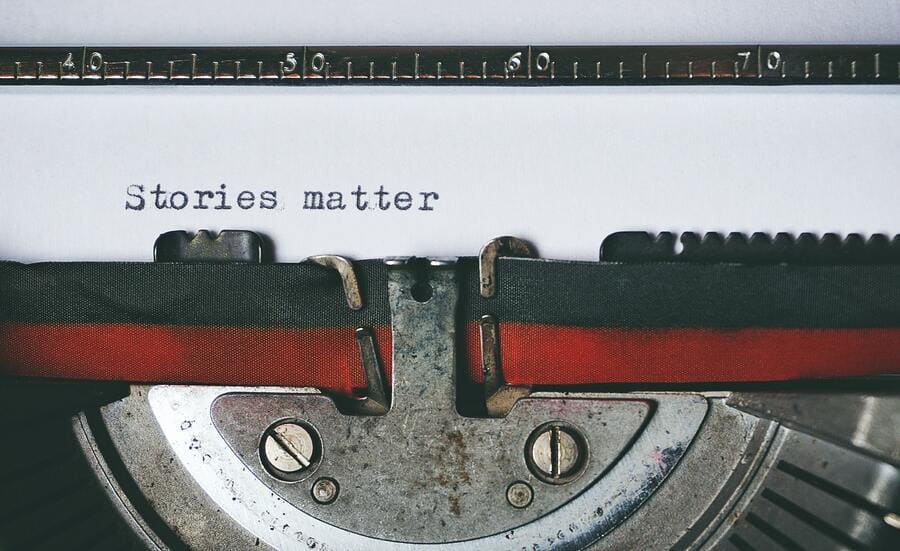
Understanding the structure of a story — setup, confrontation, and resolution — is essential for crafting compelling narratives.
Each part serves a specific function and propels the story forward.
Read up on different narrative structures and consider how they could apply to your own writing.
This foundational knowledge will serve you well no matter what genre you’re working in.
8. Create Complex Characters
Characters are the heart of any story.
To create characters that feel real to your readers, they need to be fully fleshed out with their own desires, flaws, and contradictions.
Invest time in character development, imagining your characters’ backgrounds, motivations, and fears.
Remember, the most engaging characters are often the ones that readers can empathize with, even if they’re flawed.
9. Read Widely
The more you read, the more you’ll understand about different writing styles , narrative structures, and character development strategies .
But don’t just stick to your favorite genres.
Read widely — across different genres, cultures, and time periods. It will help broaden your perspectives, spark fresh ideas, and enrich your own writing.
10. Start a Writing Journal

A writing journal can serve as a treasure chest for ideas, sketches, character descriptions, or just musings about the world.
Over time, these entries can become a gold mine of inspiration for future writing projects.
It’s also a great tool for tracking your writing progress and reflecting on your journey as a writer.
11. Seek Feedback and Support
Writing doesn’t always have to be a solitary pursuit.
By engaging with writing communities, you can benefit from others’ experiences, receive constructive criticism, and also learn by critiquing others’ work.
This shared camaraderie can be a significant source of motivation and growth.
12. Set Achievable Goals
Setting tangible, achievable goals are like stepping stones on your writing journey.
These could range from small, daily targets like writing a certain number of words, to larger aspirations such as completing a manuscript or getting published.
Celebrating these milestones, no matter how small, will boost your confidence and drive to keep going.
13. Edit and Revise
Your first draft is just the beginning.
Revisiting your work, reworking sections, and fine-tuning language are all part of the writing process.
This is your chance to sharpen your narrative, enhance your characters, and ensure that your story is as compelling as possible.
Remember, every great writer is also a great editor.
14. Embrace Failure and Persevere
Every writer, from Stephen King to J.K. Rowling has faced rejection and failure.
Writing can be a journey of highs and lows, but every stumble is an opportunity to learn and grow.
The most successful writers are those who persevere, who pick themselves up after rejections and setbacks, and who stay committed to refining their craft.
Every word, every sentence, and every story you write is a step forward on your creative journey.
Follow the Ultimate Creative Writing Commandment

There’s one tip that is absolutely crucial to your creative writing journey…
The tip: Start writing .
Like, today.
Know that your writing doesn’t have to be perfect — but it does need to exist.
Remember, there’s no right or wrong way to be creative. Your voice is uniquely yours, and the world needs to hear it.
So go ahead, let your imagination run wild, and let your creative work entertain and inspire.
Happy writing!
Ivy Shelden
GET PAID TO WRITE
Make 2-5k per month, even if you're a beginner . we're seeking writers of any skill level ..
Written by Ivy Shelden
Leave a comment cancel reply, latest from the blog.

How to Use AI to Breathe Life into Modern Storytelling in 2024
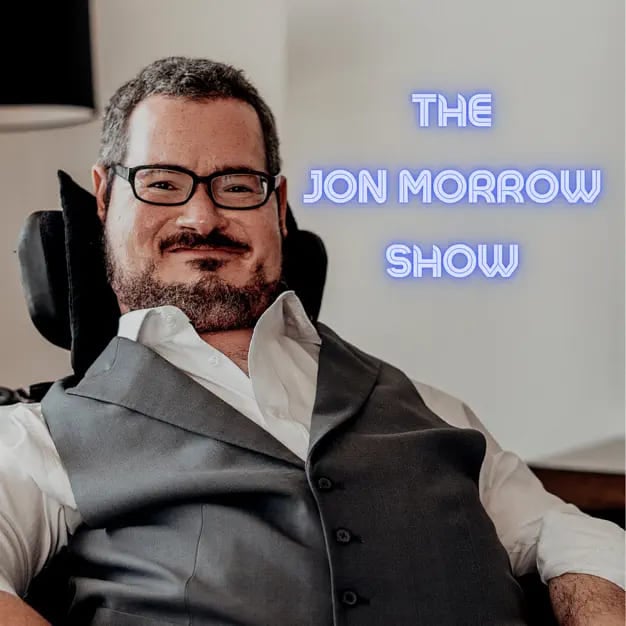
Tim Stoddart – What to Do When You’re a Beginner and Feel like a Nobody [PODCAST]

10 Super Simple Social Media Optimization Hacks for 2024

With over 300k subscribers and 4 million readers, Smart Blogger is one of the world's largest websites dedicated to writing and blogging.
Best of the Blog
© 2012-2024 Smart Blogger — Boost Blog Traffic, Inc.
Terms | Privacy Policy | Refund Policy | Affiliate Disclosure

In order to continue enjoying our site, we ask that you confirm your identity as a human. Thank you very much for your cooperation.

- Onsite training
3,000,000+ delegates
15,000+ clients
1,000+ locations
- KnowledgePass
- Log a ticket
01344203999 Available 24/7
What is Creative Writing?
Discover What Is Creative Writing as we unravel the art of self-expression through words. In this blog, learn the meaning and techniques of creative writing, igniting your imagination and honing your storytelling skills. Unlock the world of literary creativity and learn how to craft compelling narratives that captivate readers.

Exclusive 40% OFF
Training Outcomes Within Your Budget!
We ensure quality, budget-alignment, and timely delivery by our expert instructors.
Share this Resource
- Report Writing Course
- Effective Communication Skills
- Speed Writing Course
- E-mail Etiquette Training
- Interpersonal Skills Training Course

Creative Writing is a form of art that allows people to express their thoughts, ideas, and emotions through the written word. It is a mode of self-expression that combines imagination with linguistic skills to create compelling narratives, poems, and other forms of literature. A Statista survey found that 76,300 Authors, Writers and Translators work in the United Kingdom alone in 2023. This shows Creative Writing is a demanding career worldwide.To know more about it, read this blog, to learn What is Creative Writing, how to write captivating narratives, and discover the essence of expressive writing.
Table of Contents
1) Understanding What is Creative Writing
2) Key elements of Creative Writing
3) Types of Creative Writing
4) Importance of Creative Writing
5) The Creative Writing process
6) Tips for effective Content Writing
7) Conclusion
Understanding What is Creative Writing
Creative Writing is the art of crafting original content that elicits readers' emotions, thoughts, and imagination. Unlike Academic or Technical Writing, Creative Writing allows for more personal expression and imaginative exploration. It encompasses various forms such as fiction, poetry, non-fiction, and drama, all of which share the common thread of artistic storytelling.

Key elements of Creative Writing
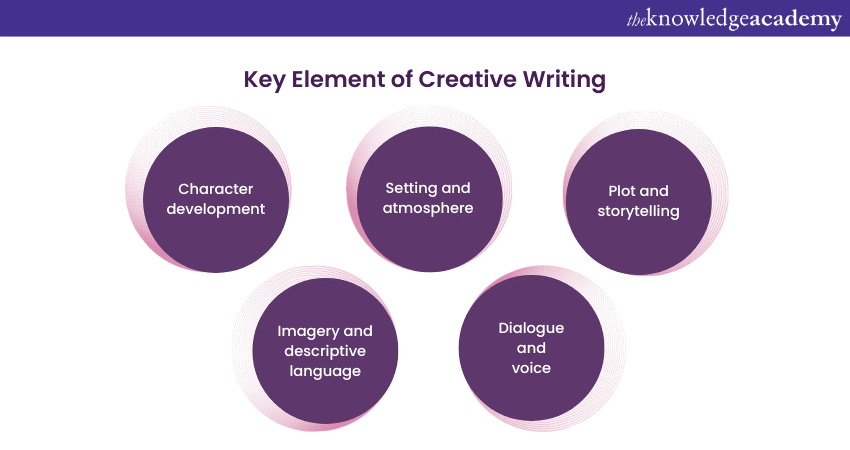
2) Character development: Compelling characters are the heart of any great story. Through careful development, characters become relatable, complex, and capable of driving the plot forward.
3) Setting and atmosphere: The setting and atmosphere create the backdrop for the story. By skilfully crafting these elements, Writers can enhance the overall mood and tone, allowing readers to feel like they're living within the story's world.
4) Plot and storytelling: A well-crafted story keeps readers engaged and invested in the narrative's progression. This includes introducing conflicts, building tension, and crafting satisfying resolutions .
5) Dialogue and voice: Dialogue adds authenticity to characters and provides insight into their personalities. A distinctive narrative voice also contributes to the story's uniqueness and captivates readers.
Types of Creative Writing
Creative Writing encompasses various genres and forms, each offering a unique platform for expressing creativity, storytelling, and emotion. As you delve into the world of Creative Writing, it's essential to explore the various types and discover which resonates with you the most. Here are some of the prominent types of Creative Writing:
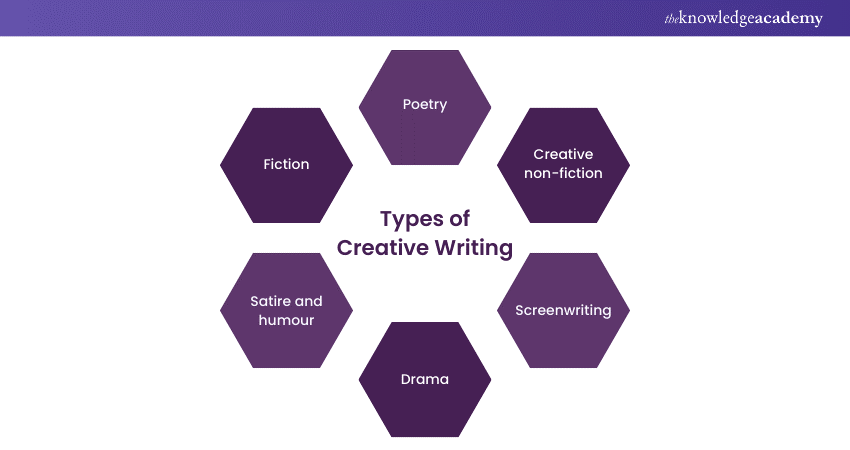
1) Fiction
Fiction is perhaps the most well-known type of Creative Writing. It involves inventing characters, settings, and plotlines from scratch. Writers have the freedom to create entire worlds and realities, whether they're set in the past, present, future, or even in alternate dimensions.
Novels, short stories, novellas, and flash fiction are all forms of fiction that engage readers through compelling characters, intriguing conflicts, and imaginative settings. From fantasy realms to gritty crime dramas, fiction transports readers to new and exciting places.
2) Poetry
Poetry is the art of condensing language to evoke emotions, provoke thoughts, and communicate complex ideas using rhythm, rhyme, and vivid imagery. Poems' conciseness requires Writers to choose their words carefully, often crafting multiple layers of meaning within a few lines.
Poetry can take various forms, including sonnets, haikus, free verse, and slam poetry. Each form carries its own rules and conventions, allowing Poets to experiment with structure and sound to create impactful compositions. Moreover, poetry delves into the depth of emotions, exploring themes ranging from love and nature to social issues and personal reflections.
3) Creative non-fiction
Non-fiction writing draws from real-life experiences, observations, and research to convey information, insights, and personal perspectives. This form includes genres such as essays, memoirs, biographies, autobiographies, and journalistic pieces.
Non-fiction Writers blend storytelling with factual accuracy, presenting their ideas in a compelling and informative manner. Personal essays offer a glimpse into the writer's thoughts and experiences. At the same time, memoirs and autobiographies share personal journeys and reflections, connecting readers with the author's life story.
4) Drama and playwriting
Playwriting is the creation of scripts for theatrical performances. The challenge lies in crafting engaging dialogue and constructing scenes that captivate both the audience and the performers.
Dramatic Writing requires an understanding of pacing, character motivations, and the visual aspects of storytelling. While Theatrical Writing requires a keen sense of the following:
a) Character dynamics: Building relationships between characters and exploring their motivations and conflicts.
b) Stage directions: Providing clear instructions for actors, directors, and stage designers to bring the play to life.
c) Dramatic structure: Crafting acts and scenes that build tension and engage the audience.
5) Satire and humour
Satire and humour utilise wit, sarcasm, and clever wordplay to critique and mock societal norms, institutions, and human behaviour. This form of Creative Writing often challenges readers to view the world from a different perspective.
Moreover, it encourages them to question established conventions. Satirical works, whether in literature, essays, or satirical news articles, aim to entertain while also prompting reflection on serious topics.
Master Copywriting skills with our Copywriting Course – join today and become an expert Copywriter!
Importance of Creative Writing
Creative Writing holds a profound significance beyond its role as a literary pursuit. It bridges imagination and reality, fostering personal growth, communication skills, and cultural preservation. Here's a closer look at why Creative Writing is of paramount importance:
1) Personal expression and catharsis
Creative Writing is a sanctuary for self-expression. Individuals can voice their innermost thoughts, emotions, and experiences through poetry, stories, and essays. This act of sharing vulnerabilities and joy brings about a cathartic release, offering a therapeutic outlet for emotional expression. Moreover, it cultivates a deeper understanding of oneself, promoting self-awareness and self-acceptance.
2) Cultivation of communication skills
The art of Creative Writing cultivates effective Communication Skills that transcend the written word. Writers learn to convey ideas, concepts, and feelings coherently and captivatingly.
This proficiency extends to verbal communication, enabling Writers to articulate their thoughts with clarity and eloquence. As a result, it enriches interpersonal relationships and professional endeavours.
3) Nurturing empathy and perspective
Writers develop a heightened sense of empathy as they craft diverse characters and explore multifaceted narratives. Immersing oneself in the shoes of different characters fosters understanding and tolerance for various viewpoints and backgrounds. Readers, in turn, experience this empathy, gaining insight into the complexities of human nature and the diverse tapestry of human experience.
4) Exploration of social issues
Writers wield the power to effect change through their words. They can shed light on societal issues, challenge norms, and provoke critical conversations. By addressing topics such as social justice, equality, and environmental concerns, Creative Writing becomes a catalyst for positive transformation and advocacy.
5) Connection and impact
Creative Writing builds bridges between individuals by establishing connections on emotional and intellectual levels. Stories resonate across cultures, transcending geographical and temporal boundaries. The impact of a well-crafted story can be enduring, leaving a mark on readers' hearts and minds.
Unlock your creative potential with our Creative Writing Training - register now!
The Creative Writing process
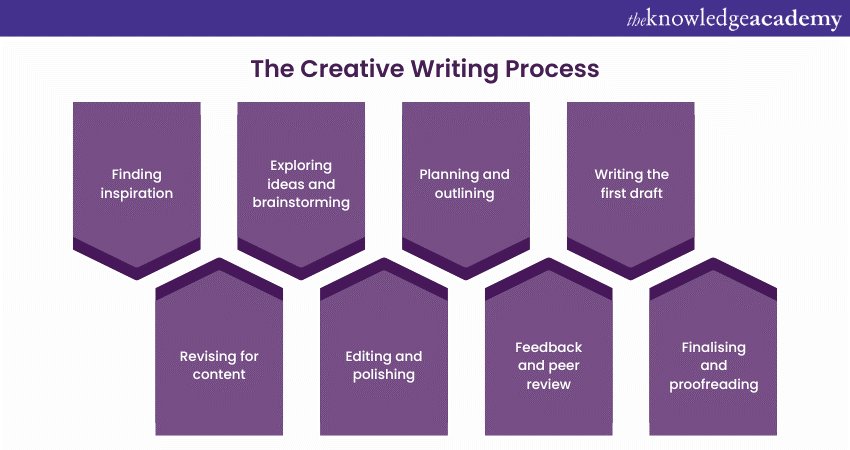
Creating a compelling piece of Creative Writing is a journey that involves a series of steps, each contributing to the evolution of your story. Whether you're crafting a short story, a novel, or a poem, here's a breakdown of the Creative Writing process in eight essential steps:
1) Finding inspiration
The process begins with a moment of inspiration—a fleeting thought, an intriguing image, or a powerful emotion. Inspiration can strike anywhere—nature, experiences, dreams, or simple observation.
Keep a journal or digital note-taking app to capture these sparks of inspiration as they occur. Explore your interests, passions, and emotions to identify themes and ideas that resonate with you.
2) Exploring ideas and brainstorming
Once you've identified an inspiring concept, delve deeper. Brainstorm ideas related to characters, settings, conflicts, and themes. Jot down all possibilities, allowing your imagination to roam freely. This stage is about generating a wealth of creative options that will serve as building blocks for your story.
3) Planning and outlining
Organise your thoughts by creating an outline. Outline your story's major plot points, character arcs, and pivotal moments. This outline acts as a roadmap, guiding you through the narrative's progression while providing flexibility for creative surprises.
4) Writing the first draft
Once you are done with your outline, start writing your first draft. Don't worry about perfection—focus on getting your ideas onto paper. Let your creativity flow and allow your characters to surprise you. The goal is to have a complete manuscript, even if it's messy and imperfect.
5) Revising for content
Once the first draft is complete, take a step back before revisiting your work. During this stage, focus on revising for content. Analyse the structure of your plot, the development of your characters, and the coherence of your themes. Make necessary changes, add details, and refine dialogue. Ensure that your story's foundation is solid before moving on.
6) Editing and polishing
Edit your Manuscript for grammar, punctuation, sentence structure, and style. Pay attention to clarity and consistency. Also, focus on enhancing the flow of your writing and creating a polished narrative that engages readers.
7) Feedback and peer review
Share your revised work with others—friends, writing groups, or beta readers—to gather feedback. Constructive criticism can highlight blind spots and offer perspectives you might have missed. Use this feedback to refine your work further.
8) Finalising and proofreading
Incorporate the feedback you've received and make final revisions. Proofread meticulously for any remaining errors. Ensure that your work is formatted correctly and adheres to any submission guidelines if you plan to publish or share it.
Tips for effective Creative Writing
Here are some of the useful tips you should consider incorporating in your process of writing :
1) Show, don't tell: Instead of directly stating emotions or details, "showing" involves using actions, thoughts, and dialogue to convey information. This technique allows readers to draw their own conclusions and become more immersed in the story.
2) Use of metaphors and similes: Metaphors and similes offer creative ways to describe complex concepts by comparing them to something familiar. These literary devices add depth and creativity to your writing.
3) Building suspense and tension: By strategically withholding information and creating unanswered questions, Writers can build suspense and keep readers eagerly turning pages.
4) Crafting memorable beginnings and endings: A strong opening captures readers' attention, while a satisfying conclusion leaves a lasting impact. These elements bookend your story and influence readers' overall impression.
5) Experimenting with point of view: The choice of point of view (first person, third person, etc.) shapes how readers experience the story. Experimenting with different perspectives can lead to unique narrative opportunities.
Conclusion
We hope this blog gave you a clear idea of What is Creative Writing, along with its process and useful tips. The Creative Writing process is not linear; you might find yourself revisiting earlier steps as your story evolves. Embrace the journey, allowing your writing to develop and transform through each phase.
Enhance your Academic Writing prowess with our comprehensive Academic Writing Masterclass . - sign up now!
Frequently Asked Questions
a) Literary Agent
b) Screenwriter
c) Video Game Story Writer
d) Copywriter
e) Website Editor
f) Creative Director
There are several resources or recommended readings which can help you to hone your Creative Writing skills. Here we have discussed some of such resources:
a) “On Writing: A Memoir of the Craft" by Stephen King
b) "Bird by Bird: Some Instructions on Writing and Life" by Anne Lamott
c) "Writing Down the Bones: Freeing the Writer Within" by Natalie Goldberg
d) Joining book clubs
e) Reading a variety of authors and genre
f) Practicing writing regular prompts and exercises.
The Knowledge Academy takes global learning to new heights, offering over 30,000 online courses across 490+ locations in 220 countries. This expansive reach ensures accessibility and convenience for learners worldwide. Alongside our diverse Online Course Catalogue, encompassing 17 major categories, we go the extra mile by providing a plethora of free educational Online Resources like News updates, Blogs , videos, webinars, and interview questions. Tailoring learning experiences further, professionals can maximise value with customisable Course Bundles of TKA .
The Knowledge Academy’s Knowledge Pass , a prepaid voucher, adds another layer of flexibility, allowing course bookings over a 12-month period. Join us on a journey where education knows no bounds.
The Knowledge Academy offers various Personal Development courses , including Organisational skills training, Emotional Intelligence Training, and Report Writing Course. These courses cater to different skill levels, providing comprehensive insights into Journalism . Our Business Skills blogs covers a range of topics related to Sports Journalism, offering valuable resources, best practices, and industry insights. Whether you are a beginner or looking to advance your Creative Writing skills, The Knowledge Academy's diverse courses and informative blogs have you covered.
Upcoming Business Skills Resources Batches & Dates
Fri 30th Aug 2024
Fri 11th Oct 2024
Fri 13th Dec 2024
Fri 3rd Jan 2025
Fri 7th Mar 2025
Fri 2nd May 2025
Fri 4th Jul 2025
Fri 5th Sep 2025
Fri 7th Nov 2025
Get A Quote
WHO WILL BE FUNDING THE COURSE?
My employer
By submitting your details you agree to be contacted in order to respond to your enquiry
- Business Analysis
- Lean Six Sigma Certification
Share this course
Our biggest spring sale.
* WHO WILL BE FUNDING THE COURSE?
We cannot process your enquiry without contacting you, please tick to confirm your consent to us for contacting you about your enquiry.
By submitting your details you agree to be contacted in order to respond to your enquiry.
We may not have the course you’re looking for. If you enquire or give us a call on 01344203999 and speak to our training experts, we may still be able to help with your training requirements.
Or select from our popular topics
- ITIL® Certification
- Scrum Certification
- Change Management Certification
- Business Analysis Courses
- Microsoft Azure Certification
- Microsoft Excel Courses
- Microsoft Project
- Explore more courses
Press esc to close
Fill out your contact details below and our training experts will be in touch.
Fill out your contact details below
Thank you for your enquiry!
One of our training experts will be in touch shortly to go over your training requirements.
Back to Course Information
Fill out your contact details below so we can get in touch with you regarding your training requirements.
Preferred Contact Method
No preference
Back to course information
Fill out your training details below
Fill out your training details below so we have a better idea of what your training requirements are.
HOW MANY DELEGATES NEED TRAINING?
HOW DO YOU WANT THE COURSE DELIVERED?
Online Instructor-led
Online Self-paced
WHEN WOULD YOU LIKE TO TAKE THIS COURSE?
Next 2 - 4 months
WHAT IS YOUR REASON FOR ENQUIRING?
Looking for some information
Looking for a discount
I want to book but have questions
One of our training experts will be in touch shortly to go overy your training requirements.
Your privacy & cookies!
Like many websites we use cookies. We care about your data and experience, so to give you the best possible experience using our site, we store a very limited amount of your data. Continuing to use this site or clicking “Accept & close” means that you agree to our use of cookies. Learn more about our privacy policy and cookie policy cookie policy .
We use cookies that are essential for our site to work. Please visit our cookie policy for more information. To accept all cookies click 'Accept & close'.
Become a Bestseller
Follow our 5-step publishing path.
Fundamentals of Fiction & Story
Bring your story to life with a proven plan.
Market Your Book
Learn how to sell more copies.
Edit Your Book
Get professional editing support.
Author Advantage Accelerator Nonfiction
Grow your business, authority, and income.
Author Advantage Accelerator Fiction
Become a full-time fiction author.
Author Accelerator Elite
Take the fast-track to publishing success.
Take the Quiz
Let us pair you with the right fit.
Free Copy of Published.
Book title generator, nonfiction outline template, writing software quiz, book royalties calculator.
Learn how to write your book
Learn how to edit your book
Learn how to self-publish your book
Learn how to sell more books
Learn how to grow your business
Learn about self-help books
Learn about nonfiction writing
Learn about fiction writing
How to Get An ISBN Number
A Beginner’s Guide to Self-Publishing
How Much Do Self-Published Authors Make on Amazon?
Book Template: 9 Free Layouts
How to Write a Book in 12 Steps
The 15 Best Book Writing Software Tools
Creative Writing Ultimate Guide
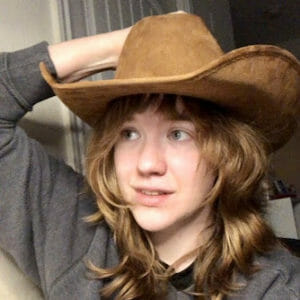
I don’t know about you, but when I start learning a new skill, I want to know everything about it right away. How do I get started? What do I need to get started? How could this new skill transform my life?
Being an incessant researcher of new pastimes, I love a good master post. So, I’ve made one today for one of my favorite things in the world: creative writing .
I wrote this for people who are just getting into creative writing, but even if you’ve been writing for a while, stay tuned—some of the tricks and resources in this post will be helpful for you, too.
Need A Fiction Book Outline?
What is creative writing?
Creative writing examples, how to start creative writing, creative writing prompts, creative writing jobs, creative writing degrees, online creative writing courses.
Creative writing is imaginative writing. It’s meant to entertain its readers and get some emotional response from them. You’ll note that I said imaginative , but I didn’t say fictional writing, because while fiction is a subcategory of creative writing, it doesn’t define creative writing. All fiction is creative writing, but not all creative writing is fiction.
While technical, legal, or academic writing might be focused on conveying information in the most efficient and clear manner possible, the goal of creative writing is slightly different. You still want to communicate effectively and clearly, but you also want to put some pep in there. Creative writing uses tools like metaphor and imagery to evoke an image, emotion, or both from the reader.
Another way to look at it: if you were to say what makes creative writing distinct as a form, you could say it’s the artsy one.
Creative writing covers more than just fiction, or even just novels . Here’s a quick rundown of some types of creative writing you might encounter.
Novels (which fall under the ‘fiction’ umbrella) are a type of creative writing where the reader follows a character or characters through a plot. A novel might be a standalone, or it might be part of a series.
Example: Parable of the Sower by Octavia Butler
2. Short Stories
Short stories (which also fall under the ‘fiction’ umbrella) follow a character through a plot, like you’d see in a novel, but short stories are, well, shorter. Generally, short stories run between 1,000 and 10,000 words, with works under 1,000 words falling under the subcategory ‘flash fiction.’
Example: The Yellow Wallpaper by Charlotte Perkins Gilman
Poetry is a form of writing which focuses heavily on imagery, metaphor, symbolism, and other figurative tools. It also involves a lot of technical work with form; meter and rhythm are commonly used to enhance meaning. You can generally tell what poems are by looking at them, since they’re usually divided into groups of lines (stanzas) instead of paragraphs, like you might see in other forms of creative writing.
Example: Little Beast by Richard Siken
Related: Where to Publish Poetry
Plays are written for the stage. They include stage direction, brief scene descriptions, and character dialogue, but there’s often not a lot of prose. Plays are intended to be watched by an audience instead of read, so whatever prose exists, it is intended for the people participating in the play.
Example: Hamlet by Shakespeare
Songs are similar to poetry in terms of their structure and use of figurative language, but songs are meant to be performed. People don’t generally read song lyrics without listening to it, and the instrumentation and production often enhance the meaning of a song. Songwriters also use music theory to play with meaning—at a basic level, for example, minor chords generally convey sadness, while major chords generally convey happiness.
Example: Let it Be by the Beatles
6. Memoirs & Personal Essays
Memoirs and personal essays are a form of creative writing where an author draws on their real lived experience to create a narrative. Memoir specifically sometimes plays with chronological order and specific technical fact in favor of symbolic resonance—the author is getting at an emotional truth rather than a literal or objective truth.
Example: Me Talk Pretty One Day by David Sedaris
7. Journaling
Not everyone uses journaling as a creative writing exercise—some people want to log their daily activities and be done with it—but if you’ve ever poured your heart out about a breakup to the nonjudgmental pages of a notebook, you’ve probably already done some creative writing!
Want to find more examples? I wrote on this topic for another site, and it includes even more examples of creative writing for you to try.
Now that you know what creative writing looks like, let’s talk about how to get started, even if you’ve never practiced creative writing before.
1. Try stuff on until something fits
Take a look at the list above (or do a Google search for ‘types of creative writing’ and see if there’s anything else you might be interested in—I won’t be offended) and pick one that seems fun. If you want to try, for example, a screenplay, but you’re not sure how to write one, read a bunch. Get a feel for how they work.
Maybe you do that and decide you don't want to write screenplays after all. Okay! Try short stories. Try poetry. Try songwriting. Practicing different forms will make you a more well-rounded writer in the long run, and you might be surprised at what resonates with you.
2. Practice, practice, practice
Once you’ve found a form or a few forms that suit you, your job as a newbie is simple: practice. Write whatever you want as often as you can and, if possible, for your eyes only. Create a relationship between yourself and your craft.
Some say you should start with short stories before jumping into novels so you can practice completing narrative arcs. That might work great! But if you hate writing short stories, just practice with writing novels.
If you have an idea that feels a little too advanced for you, that’s probably what you should be working on, since it’ll teach you a lot about the craft along the way. Don’t be intimidated, and don’t worry about anyone else’s opinions (this includes any fretting about publishing). Your singular goal here is to create, and your secondary goal is to challenge yourself.
3. Join some kind of writerly group
But hold on, you might be thinking. How do I know I’m not getting worse the more I practice? How do I know I’m not just churning out garbage?
At some point, especially if your goal is to publish , you’ll want feedback on your work. And while it’s important to have the support of your loved ones, it’s also important to get feedback from other writers.
I do not recommend sending your very first manuscript to an editor or well-established writer for feedback—their feedback, generally aimed at moderate to advanced writers, is probably going to devastate you at the fledgling stage. I do recommend finding other writers at approximately your skill level to bounce ideas off of and exchange critiques. These other writers can be found online or at local writing circles—check your local public library for creative writing workshops.
Have you picked out a form of creative writing to try, but you just can’t come up with any ideas? Try using a creative writing prompt to get those creative gears turning. These are totally for you to use however is most helpful: use the prompt as-is, tweak it a little, whatever works.
Prompts are a great way to explore different types of tones in writing and hone your own personal style as an author!
Use this FREE tool: Writing Prompts Generator
Looking to make some money with your creative writing endeavors? Here’s a few options to kickstart your job search:
Ghostwriting
As a ghostwriter, your job is to write the story your client assigns you . This might be a fictional novel, or it might be a memoir. The client often has specific requests for content, length, and so on. The catch? Your name is not on the book. You’re not allowed to say that you wrote it—the client’s name or pen name usually goes on the author line. You can find ghostwriting gigs on sites like Upwork or Fiverr.
Marketing does involve some technical elements like copywriting, but creative writers have a place in marketing, too. Brands need catchy slogans, funny commercials, and even social media gurus to run entertaining Twitter accounts. For more ideas on how to market your upcoming book , check out our post on the topic.
Columnist/Blog Writer
You can also look for work as an op-ed columnist or blog writer. This might be something you do for an existing website, or it might be a blog you start from scratch on Wix, SquareSpace, or Tumblr.
You might have heard of people getting creative writing degrees, or at least you might have heard some of the discourse surrounding these degrees. Off the bat, I want to say that you don’t need a creative writing degree to be a writer. It doesn’t make you a ‘real’ writer, and it doesn’t indicate your seriousness toward the craft.
If you do want to get a creative writing degree, though, you’re looking (broadly) at two options:
Undergraduate writing programs
This is your BFA in creative writing. Not all colleges offer them—many (like my alma mater) offer a creative writing concentration or focus as part of an English degree. So you might graduate, hypothetically, for example, with a degree in English with a concentration in creative writing. Some colleges don’t offer a major, but they do offer minors.
Check to see what sorts of courses your college or prospective college offers. Do you have to be an English major to take their creative writing course? Does their creative writing course offer guidance in the type of creative writing you want to pursue? For example, my alma mater offered a creative writing concentration with two tracks, one for fiction and one for poetry. There was also a separate film studies concentration for aspiring screenplay writers and film students.
Graduate writing programs (a.k.a., the MFA)
MFA programs can be extremely competitive and prohibitively expensive, not to mention that you’re obviously not guaranteed to come out of them a better writer. They can be a great tool, but they’re not a necessary one. Look at it this way: are you willing to get this MFA if it means you might come out of it without a successfully published novel? If so, proceed.
If you want to pursue an MFA, do your research. Don’t go straight for the Iowa Writers Workshop application page and hope for the best—investigate the universities that look appealing to you, see if your interests align with theirs, and make that application fee count.
Going to college isn’t the only way to take classes on creative writing! If you’re looking for more cost-friendly options, the Internet is your friend. I’ve linked to a few places loaded with creative writing courses to get you started.
1. Intelligent.com: The Best 10 Online Creative Writing Courses
2. Coursera: Best Creative Writing Courses and Certifications
3. Self-Publishing School: Best Self-Publishing Courses
4. Our Programs: Fiction Write Your Book Program
Are you ready to try an online creative writing course? Are you ready to start some creative writing prompts? Or, are you think you're ready to go for a full creative writing project of your own? Here is a resource to help you get started:

What is a Biography? Definition, Elements, and More
Editorial, Writing

25 Personification Examples for Writers: What It Is & How to Use It
Fiction, Learning, Writing
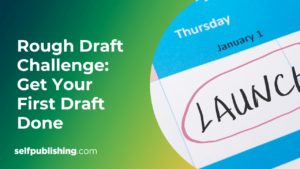
5 Tips For Mastering Your Rough Draft
Join the community.
Join 100,000 other aspiring authors who receive weekly emails from us to help them reach their author dreams. Get the latest product updates, company news, and special offers delivered right to your inbox.

What is Creative Writing?

Written by Scott Wilson

Creative writing is any kind of writing that employs creative literary or poetic techniques in the service of either fiction or non-fiction writing. It involves original composition and expressiveness of the individual author.
Ask ten creative writing professors what creative writing is, and you’ll get eleven different answers. Turn to the dictionary and the definition invokes invention and incorporation of imagination. But what are the limits of imagination? Where does invention begin?
Every sentence in every work ever written began as an act of creation in the mind of the writer.
Creative writing may be most easily defined by what it is not…
- Technical writing
- Professional or business writing
- Scholarly or academic writing
Creative writing is the entire body of the writer’s craft that falls outside the boundaries of the ordinary.
Yet you will find many entries in the canon of those fields that might also be considered creative writing. No one would consign Truman Capote’s groundbreaking In Cold Blood to the sterile cells of mere journalism. But that haunting novel is unquestionably also an important work of investigative reporting.
So, what is creative writing, if a non-fiction novel of a horrific quadruple murder falls into the same scope as a classic of American literature like To Kill a Mockingbird ?
It has to do with style and art. Creative writing goes to the heart of the individual expressiveness of the writer. It breaks the boundaries of the typical. That’s an exercise of artistic skill that can happen in any topic, toward almost any goal. And it’s the heart of what it is to be a writer, no matter what you write about.
Defining creative writing isn’t easy. Rooms full of the best authorities routinely disagree. But what is creative writing , isn’t the most interesting question to ask here. Instead, we would be best served by asking another:
Why Is Creative Writing Important?

Storytellers were plying their craft thousands of years before the written word was invented. The creative spark doesn’t belong to words. It may not even depend on language. It draws instead on a deep part of what it is to be human. Invention, imagination, the urge to create… these are all deep and vital parts of the human experience.
Creative writing is important because it is evocative.
That well of creativity flows forth in many arts and forms of expression. But in creative writing it has found a medium where it can be both preserved and shared. It’s a method of human connection that has no expiration date, no geographical or even cultural limit.
Writers touch the souls of their contemporaries first. But like Shakespeare, Wordsworth, and Lady Murasaki, their reach may also span generations.
Creative Writing Fuels Communication in All Forms of Writing
Although fiction is the first refuge of creative writing, that expressiveness serves the purposes of just about any kind of author.
The goals of most other forms of writing are focused on various kinds of literal communication. A journalist seeks to convey the facts and the context of important news stories. Technical writers need to communicate the details of operating programs and machinery, clearly describing all kinds of minute details with zero ambiguity. Business communications are created with a view toward clarity and concision—helping readers get the main points of the piece quickly and without confusion.
Creative writing can also help to serve these purposes.
Creative writing taps into a different level of communication. While it may, and often does, aspire to other goals like offering clarity and detail, it also goes toward developing emotional connection. The reader will take away more than mere words from a piece of creative writing.
Creative Writing is Important For Making Other Kinds of Writing Compelling
Just as importantly, creative writing entertains. In a story about the importance of algorithmic and high-frequency trading, all kinds of technical details must be absorbed to make sense of the issues. Both technological and economic concepts have to be introduced. In a comprehensive article about the subject, readers from outside the field could be expected to nod off about two pages in.
But put the story in the hands of Michael Lewis, and you get Flash Boys , a New York Times Best Seller.
It’s not important that Flash Boys did well because it was entertaining, however. It’s important because the market trends and activities it described have real impacts on many of the readers. Retirement funds, college savings, family investments… all are affected by the story Flash Boys tells. Today, millions of readers who would never otherwise have understood how their investments were being handled can make an informed assessment… thanks to creative writing.
How To Separate Creative Writing From Less Creative Forms of Writing

In general, it’s safe to say that a piece of writing is creative when it makes use of literary devices such as:
- Narrative development
- Imagination and invention
In Cold Blood passes this test due to Capote’s use of characterization, plot development, and world-building. It’s considered today to be a pioneering example of the non-fiction novel, a paragon of the creative writing world.
The original crime reports, local newspaper articles, and subsequent court documents detail the same events with the same participants. Yet they are not works of creative writing. The incident is described in dry, straightforward, technical language. The timeline is linear and offered without consideration of pace or drama.
Both Capote and the authors of those other articles and documents set out to inform. But Capote’s goal was also to captivate.
New Journalism Tells the Story of How Creative Writing Has an Important Role in Non-Fiction
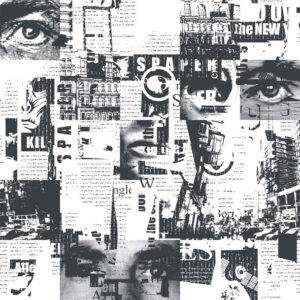
Books like Wolfe’s The Right Stuff mixed truth and dramatization, documentation and invention, to tell larger stories about serious events. In dramatizing those stories, New Journalism writers also drew more readers and achieved broader awareness of the stories.
At the same time, long-form New Journalism pieces, deeply researched and documented, were able to report stories in depth in a way that traditional journalism often did not. By invoking plot, characterization, and narrative structures, the New Journalists could keep readers involved in long and complex issues ranging from crime to politics to culture.
New Journalism is important in defining what is creative writing because it is clearly an example of both creative and journalistic writing. It demonstrates the ways that creative writing can serve other forms of writing and other kinds of writers.
Of course, it’s also possible to come at the divide from the other shore. Categories of writing that are clearly creative in nature include:
- Novels and novellas
- Flash fiction and short stories
- Plays and film scripts
These works incorporate elements of storytelling that may not always be present in other forms of writing. A newspaper article will often have a setting, action, and characters; creative writing will offer plot, pacing, and drama in describing the same story.
What is Creative Writing Coursework Like in College Degree Programs?

All university students are exposed to basic coursework in English language and communication skills. These all go to the elementary aspects of writing—the ability to construct a sentence, a paragraph, a paper. They teach grammatical rules and other elements that make a work readable to any reader of the English language.
Even the general education requirements in college programs touch on creative writing, however. Students may be assigned to write essays that explore creative styles and imagination. They’ll be assigned to read novels and stories that are time-tested examples of the finest kinds of creative writing. And they’ll be asked to explore their impressions and feelings, and to exercise their imaginations and analyze the intent of the author.
Creative writing programs go beyond the basics to touch the imagination of the writer.
Creative writing exists just on the other side of those general English and literature courses. Students in creative writing classes will be asked to take the extra step of creating their own stories using the techniques they have learned.
In fact, they may be encouraged to break the same rules that were so laboriously learned in their regular English writing classes. Creative writing works to allow writers to tap into their own imagination and emotion to forge a deeper connection with readers.
Student Workshops Offer an Interactive Way of Learning What Creative Writing Is All About
Creative writing degrees will go much further into developing a sense of what creative writing is. they continue to include many reading assignments. but instructors also introduce concepts such as:.
Genre is the method used to categorize written works. Creative writing programs explore the tropes and expectations that exist for different genres and deconstruct them for better understanding.
Story structure and form
The structure and form of a novel and a short story are very different. Creative writing programs explore different formats and how they impact creative storytelling.
Plot is not a universal feature of creative writing, but a good plot can make or break a creative work. Classes look at the features and composition of plot, and also teach plotting.
Voice, tone, and creative expression all come out of the narration of a piece of creative writing. Creative writing courses explore both the textbook forms of narrative and show how to use it to serve plot and story.
Style and rhythm
One clear feature of creative writing in all genres is that it rests on a sense of rhythm and of styling that other types of writing ignore. Many courses found in creative writing degree programs explore the ways in which writing style serves story and hooks the reader.
In addition to formal classes, students will better learn why creative writing is important and the purposes it serves through workshops. These informal gatherings are designed to foster discussion, to present examples of different types of writing, and to critique and hone individual creative writing skills .
Through that process, creative writing degrees help students better identify what creative writing is and how to use it effectively.
Creativity is Important No Matter What Your Career Goals in Writing May Be

Creative writing training allows writers in any genre to develop more complete, more meaningful, and more memorable ways to get a point across. Using the skills and techniques learned in creative writing courses can inject humor, gravity, and other sensations into any piece of writing. And those very techniques can improve concision and clarity.
Figuring out what creative writing is and what it is not, is the first thing you should leave behind in a writing career. The dry definitions of the dictionary or droning English professors are the last place you should look.
Creative writing is the process of engaging your imagination and talent to serve the purpose of whatever piece of writing you are working on. And that’s why creative writing is important.

Creative Writing 101
You love to write and have been told you have a way with words. So you’ve decided to give writing a try—creative writing.
Problem is, you’re finding it tougher than it looks.
You may even have a great story idea , but you’re not sure how to turn it into something people will read.
Don’t be discouraged—writing a compelling story can be grueling, even for veterans. Conflicting advice online may confuse you and make you want to quit before you start.
But you know more than you think. Stories saturate our lives.
We tell and hear stories every day in music, on television, in video games, in books, in movies, even in relationships.
Most stories, regardless the genre, feature a main character who wants something.
There’s a need, a goal, some sort of effort to get that something.
The character begins an adventure, a journey, or a quest, faces obstacles, and is ultimately transformed.
The work of developing such a story will come. But first, let’s look at the basics.
- What is Creative Writing?
It’s prose (fiction or nonfiction) that tells a story.
Journalistic, academic, technical writing relays facts.
Creative writing can also educate, but it’s best when it also entertains and emotionally moves the reader.
It triggers the imagination and appeals to the heart.
- Elements of Creative Writing

Writing a story is much like building a house.
You may have all the right tools and design ideas, but if your foundation isn’t solid, even the most beautiful structure won’t stand.
Most storytelling experts agree, these 7 key elements must exist in a story.
Plot (more on that below) is what happens in a story. Theme is why it happens.
Before you begin writing, determine why you want to tell your story.
- What message do you wish to convey?
- What will it teach the reader?
Resist the urge to explicitly state your theme. Just tell the story, and let it make its own point.
Give your readers credit. Subtly weave your theme into the story and trust them to get it.
They may remember a great plot, but you want them thinking about your theme long after they’ve finished reading.
2. Characters
Every story needs believable characters who feel knowable.
In fiction, your main character is the protagonist, also known as the lead or hero/heroine.
The protagonist must have:
- redeemable flaws
- potentially heroic qualities that emerge in the climax
- a character arc (he must be different, better, stronger by the end)
Resist the temptation to create a perfect lead. Perfect is boring. (Even Indiana Jones suffered a snake phobia.)
You also need an antagonist, the villain , who should be every bit as formidable and compelling as your hero.
Don’t make your bad guy bad just because he’s the bad guy. Make him a worthy foe by giving him motives for his actions.
Villains don’t see themselves as bad. They think they’re right! A fully rounded bad guy is much more realistic and memorable.
Depending on the length of your story , you may also need important orbital cast members.
For each character, ask:
- What do they want?
- What or who is keeping them from getting it?
- What will they do about it?
The more challenges your characters face, the more relatable they are.
Much as in real life, the toughest challenges result in the most transformation.
Setting may include a location, time, or era, but it should also include how things look, smell, taste, feel, and sound.
Thoroughly research details about your setting so it informs your writing, but use those details as seasoning, not the main course. The main course is the story.
But, beware.
Agents and acquisitions editors tell me one of the biggest mistakes beginning writers make is feeling they must begin by describing the setting.
That’s important, don’t get me wrong. But a sure way to put readers to sleep is to promise a thrilling story on the cover—only to start with some variation of:
The house sat in a deep wood surrounded by…
Rather than describing your setting, subtly layer it into the story.
Show readers your setting. Don’t tell them. Description as a separate element slows your story to crawl.
By layering in what things look and feel and sound like you subtly register the setting in the theater of readers’ minds.
While they concentrating on the action, the dialogue , the tension , the drama, and conflict that keep them turning the pages, they’re also getting a look and feel for your setting.
4. Point of View
POV is more than which voice you choose to tell your story: First Person ( I, me ), Second Person ( you, your ), or Third Person ( he, she, or it ).
Determine your perspective (POV) character for each scene—the one who serves as your camera and recorder—by deciding who has the most at stake. Who’s story is this?
The cardinal rule is that you’re limited to one perspective character per scene, but I prefer only one per chapter, and ideally one per novel.
Readers experience everything in your story from this character’s perspective.
For a more in-depth explanation of Voice and POV, read A Writer’s Guide to Point of View .
This is the sequence of events that make up a story —in short, what happens. It either compels your reader to keep turning pages or set the book aside.
A successful story answers:
- What happens? (Plot)
- What does it mean? (Theme: see above)
Writing coaches call various story structures by different names, but they’re all largely similar. All such structures include some variation of:
- An Inciting Incident that changes everything
- A series of Crises that build tension
- A Resolution (or Conclusion)
How effectively you create drama, intrigue, conflict, and tension, determines whether you can grab readers from the start and keep them to the end.
6. Conflict
This is the engine of fiction and crucial to effective nonfiction as well.
Readers crave conflict and what results from it.
If everything in your plot is going well and everyone is agreeing, you’ll quickly bore your reader—the cardinal sin of writing.
If two characters are chatting amiably and the scene feels flat (which it will), inject conflict. Have one say something that makes the other storm out, revealing a deep-seated rift.
Readers will stay with you to find out what it’s all about.
7. Resolution
Whether you’re an Outliner or a Pantser like me (one who writes by the seat of your pants), you must have an idea where your story is going.
How you expect the story to end should inform every scene and chapter. It may change, evolve, and grow as you and your characters do, but never leave it to chance.
Keep your lead character center stage to the very end. Everything he learns through all the complications you plunged him into should, in the end, allow him to rise to the occasion and succeed.
If you get near the end and something’s missing, don’t rush it. Give your ending a few days, even a few weeks if necessary.
Read through everything you’ve written. Take a long walk. Think about it. Sleep on it. Jot notes. Let your subconscious work. Play what-if games. Reach for the heart, and deliver a satisfying ending that resonates .
Give your readers a payoff for their investment by making it unforgettable.
- Creative Writing Examples
- Short Story
- Narrative nonfiction
- Autobiography
- Song lyrics
- Screenwriting
- Playwriting
- Creative Writing Tips
In How to Write a Novel , I cover each step of the writing process:
- Come up with a great story idea .
- Determine whether you’re an Outliner or a Pantser.
- Create an unforgettable main character.
- Expand your idea into a plot.
- Do your research.
- Choose your Voice and Point of View.
- Start in medias res (in the midst of things).
- Intensify your main character’s problems.
- Make the predicament appear hopeless.
- Bring it all to a climax.
- Leave readers wholly satisfied.
- More to Think About
1. Carry a writing pad, electronic or otherwise. I like the famous Moleskine™ notebook .
Ideas can come at any moment. Record ideas for:
- Anything that might expand your story
2. Start small.
Take time to build your craft and hone your skills on smaller projects before you try to write a book .
Journal. Write a newsletter. Start a blog. Write short stories . Submit articles to magazines, newspapers, or e-zines.
Take a night school or online course in journalism or creative writing. Attend a writers conference.
3. Throw perfection to the wind.
Separate your writing from your editing .
Anytime you’re writing a first draft, take off your perfectionist cap. You can return to editor mode to your heart’s content while revising, but for now, just write the story.
Separate these tasks and watch your daily production soar.
- Time to Get to Work
Few pleasures in life compare to getting lost in a great story.
Learn how to write creatively, and the characters you birth have the potential to live in hearts for years.
- 1. Carry a writing pad, electronic or otherwise. I like the famous Moleskine™ notebook.

Are You Making This #1 Amateur Writing Mistake?

Faith-Based Words and Phrases

What You and I Can Learn From Patricia Raybon

Before you go, be sure to grab my FREE guide:
How to Write a Book: Everything You Need to Know in 20 Steps
Just tell me where to send it:

Enter your email to instantly access my ultimate guide:
How to write a novel: a 12-step guide.
Creative Writing by Anjana Neira Dev, Anuradha Marwah, Swati Pal
Get full access to Creative Writing and 60K+ other titles, with a free 10-day trial of O'Reilly.
There are also live events, courses curated by job role, and more.
What is Creative Writing?
Defining creativity.
Creativity does not have an authoritative definition. However, most of us recognize creative acts, ideas and arts. When we visit the National Gallery of Modern Art; when we listen to Lata Mangeshkar; when we watch Shah Rukh Khan emote; or when we read Gabriel Garcia Marquez and Stephen King we know we are encountering creativity of different kinds. But creativity is not the preserve of the famous; it is not only limited to those who are celebrated as great artists or performers. We may also appreciate creativity in embroidery, cookery, or in an exceptionally beautiful flowerbed. Taking a walk through a DDA colony we may be struck by the transformation of an ugly staircase by a creative arrangement ...
Get Creative Writing now with the O’Reilly learning platform.
O’Reilly members experience books, live events, courses curated by job role, and more from O’Reilly and nearly 200 top publishers.
Don’t leave empty-handed
Get Mark Richards’s Software Architecture Patterns ebook to better understand how to design components—and how they should interact.
It’s yours, free.

Check it out now on O’Reilly
Dive in for free with a 10-day trial of the O’Reilly learning platform—then explore all the other resources our members count on to build skills and solve problems every day.

A Look Into Creative Writing | Oxford Summer Courses
What’s included in an oxford summer course.
Our tailored summer courses for ages 9-24 include all teaching and academic content, accommodation, meals (including Friday night formal dinners), a prize-giving ceremony, all-day trips and activities, airport transfers, access to Oxford Summer Courses Foundations, travel and medical insurance, and a welcome pack. Apply now to secure your spot in one of our comprehensive summer courses.
Defining Creative Writing
Creative writing , as taught at Oxford Summer Courses, is the process of crafting original and imaginative works of literature, poetry, prose, or scripts. It transcends conventional writing, encouraging individuals to explore language, structure, and narrative. Whether it's a heartfelt poem, a captivating short story, or a thought-provoking novel, creative writing allows us to communicate our unique perspectives and experiences with the world.
The Magic of Imagination
Creative Writing is a catalyst that sparks our creativity and empowers us to breathe life into our ideas on the page. With Oxford Summer Courses, aspiring writers aged 16-24 can embark on an extraordinary journey of creative expression and growth. Immerse yourself in the captivating realms of Oxford and Cambridge as you explore our inspiring creative writing programs. Teleport readers to distant lands, realms of fantasy and creation, introduce them to captivating characters, and craft new worlds through the transformative art of storytelling. Discover more about our creative writing course here . Unleash your imagination and unlock the writer within.
What Are the Different Types of Creative Writing?
Creative Writing comes in many forms, encompassing a range of genres and styles. There are lots of different types of Creative Writing, which can be categorised as fiction or non-fiction. Some of the most popular being:
- Biographies
- Fiction: novels, novellas, short stories, etc.
- Poetry and Spoken word
- Playwriting/Scriptwriting
- Personal essays
At Oxford Summer Courses, students have the opportunity to delve into these various types of Creative Writing during the Summer School.
The Benefits of Creative Writing with Oxford Summer Courses
Engaging in Creative Writing with Oxford Summer Courses offers numerous benefits beyond self-expression. By joining our dedicated Creative Writing summer school programme, you would:
- Foster self-discovery and gain a deeper understanding of your thoughts, emotions, and personal experiences.
- Improve your communication skills, honing your ability to express yourself effectively and engage readers through refined language and storytelling abilities.
- Enhance empathy by exploring diverse perspectives and stepping into the shoes of different characters, broadening your understanding of the world around you.
- Gain new skills for further education or work, expanding your repertoire of writing techniques and abilities to enhance your academic or professional pursuits.
- Nurture your creativity, encouraging you to think outside the box, embrace unconventional ideas, and challenge the status quo, fostering a life-long mindset of innovation and originality.
Embracing the Journey
To embark on a journey of creative writing, embrace curiosity, take risks, and surrender to the flow of imagination. Write regularly, read widely, embrace feedback from tutors and peers at Oxford Summer Courses. Begin to experiment with styles and genres, and stay persistent in your course of action. The path of creative writing requires dedication, practice, and an open mind. Join us as we provide tips to help you start your creative writing journey and unleash your full creative potential under the guidance of industry professionals.
Creative Writing is a remarkable voyage that invites us to unleash our imagination, share our stories, and inspire others. It offers countless personal and professional benefits, nurturing self-expression, empathy, and creativity. So, grab a pen, open your mind, and embark on this enchanting journey of creative writing with Oxford Summer Courses. Let your words paint a vivid tapestry that captivates hearts and minds under the guidance of experienced tutors from Oxford and Cambridge. Join us as we explore the magic of creative writing and discover the transformative power it holds within through the renowned Oxford Summer Courses summer school.
Ready to Join Oxford Summer Courses?
After submitting your application, we'll be in touch very soon to inform you of the outcome. Apply now to begin your journey with Oxford Summer Courses!
Share this article
Discover the enchantment of creative writing with Oxford Summer Courses. Unleash your imagination, explore different genres, and enhance your communication skills. Nurture self-expression, empathy, and creativity while gaining valuable writing techniques.
Get Our Newsletter
Oxford Summer Courses LTD
18 Beaumont Street, Oxford, OX1 2NA, United Kingdom
+44 01865 818403

Juniors 9-12
Oxford 13-15
Oxford 16-17
Oxford 18-24
Cambridge 13-15
Cambridge 16-17
Advanced Cambridge 18-24
GDPR Notice
Privacy Policy
Terms and Conditions
Sign up to our newsletter
Oxford summer courses is an organisation which contracts with the colleges of the universities of oxford, cambridge and london for the use of facilities, but which has no formal connection with the universities of oxford, cambridge and london., oxford summer courses © 2024, oxford summer courses is a company registered in england and wales with company number 08011543.
The Tech Edvocate
- Advertisement
- Home Page Five (No Sidebar)
- Home Page Four
- Home Page Three
- Home Page Two
- Icons [No Sidebar]
- Left Sidbear Page
- Lynch Educational Consulting
- My Speaking Page
- Newsletter Sign Up Confirmation
- Newsletter Unsubscription
- Page Example
- Privacy Policy
- Protected Content
- Request a Product Review
- Shortcodes Examples
- Terms and Conditions
- The Edvocate
- The Tech Edvocate Product Guide
- Write For Us
- Dr. Lynch’s Personal Website
- The Edvocate Podcast
- Assistive Technology
- Child Development Tech
- Early Childhood & K-12 EdTech
- EdTech Futures
- EdTech News
- EdTech Policy & Reform
- EdTech Startups & Businesses
- Higher Education EdTech
- Online Learning & eLearning
- Parent & Family Tech
- Personalized Learning
- Product Reviews
- Tech Edvocate Awards
- School Ratings
Why Choose SharePoint Learning Management System?
Good readers and reading strategies: everything you need to know, product review of the hear otc hearing aid, assisting english language learners: everything you need to know, developing fluency in novice readers: everything you need to know, silent reading and oral reading: everything you need to know, creative writing: everything you need to know, what is dropbox paper how to use it, reading disability: everything you need to know, product review of good organics’ cbd sleep gummies.

Writing is a creative art form. To be creative, individuals need to have a strong sense of imagination. In an era where digital media seem to be dulling everything down, kids can still be creative and conjure up extraordinarily surreal and imaginative things.
However, teaching creative writing to young kids can often be tricky. There are a lot of precautions that educators need to take. This guide can help you find the perfect way to approach this.
Assign Open-Ended Topics
Closed-ended topics that are too specific will often restrict kids. They are limited to certain situations and have trouble coming up with something. The best thing to do here would be to assign open-ended topics. Here, the learners can be as creative as they want, which is precisely what you should want.
Assess Through a Framework
It can be challenging to assess creative writing for young kids. If you’re too critical of their ideas, they might experience developmental issues.
After all, creativity should be encouraged. Therefore, it is better to assess them through a framework. Give feedback on their organization of ideas or the way they described their narrative.
Encourage Peer Feedback
Because your understanding level is higher, it is useful to have kids review their peers. They can read each other’s stories and give their opinions. This will also help them realize different ways that the topic could have been interpreted. This will only fuel their imagination and help everyone get better at writing.
Publish Their Work
To make learners feel like they are good at writing, you could publish their work. Most schools have school newspapers or monthly magazines. You can submit the best work to the paper and have it published. Reading their work in newspapers like this will help kids develop better things the next time.
They will understand their shortfalls and give you a better result. There is no harm in everyone working a little harder, but make sure that you’re giving everyone a fair chance.
Concluding Thoughts
These were some of the few steps that you could take to teach creative writing. When you’ve read and graded their work, you can give them valuable feedback. Tell them about their opening and their closing. Ask them about the structure. Teach them techniques.
All these teaching methods will help them become better creative writers. It will be a feat that you will celebrate, and so will they. Be the reason that they feel proud of coming up with fantastic stories and original ideas. It will be the best feeling you will experience in the whole world.
What Is Dropbox Paper? How to Use ...
Silent reading and oral reading: everything you ....
Matthew Lynch
Related articles more from author.
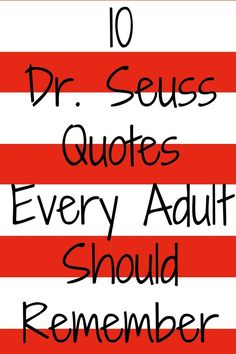
Newly minted Nobel Laureate Jon Fosse on the best writing advice he’s ever received.

Authoring Tools for Mac
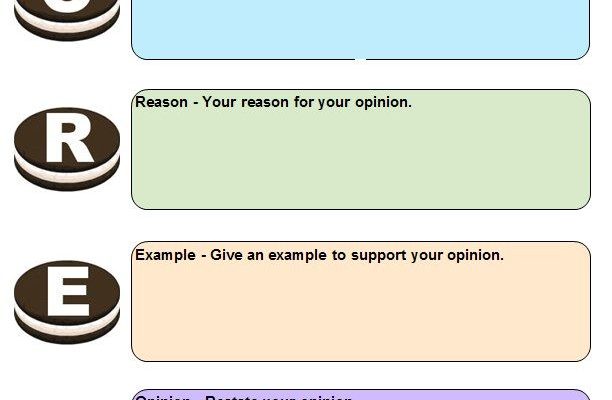
Best Snack Opinion Writing Prompts with Graphic Organizer – Digital & Printable
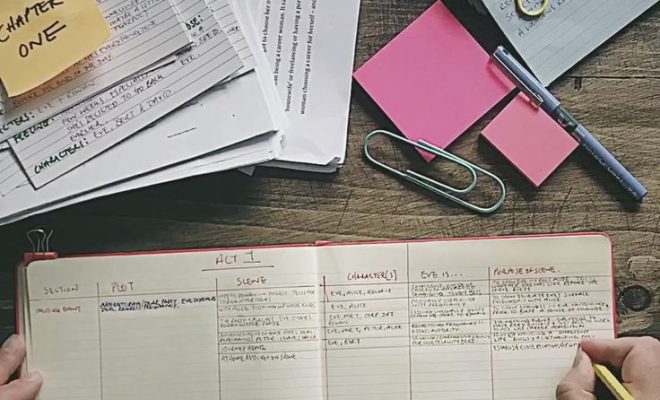
Best Writing Advice

The Seven Best Ways To Professionalize Your Writing
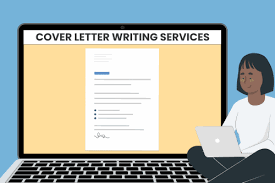
Best Cover Letter Writing Services
Get the Reddit app
A place to post an opinion you accept may be flawed, in an effort to understand other perspectives on the issue. Enter with a mindset for conversation, not debate.
CMV: AI is bad for the creative writing industry
The world’s destination for design
- Graphic Design
- Illustration
Explore inspiring designs
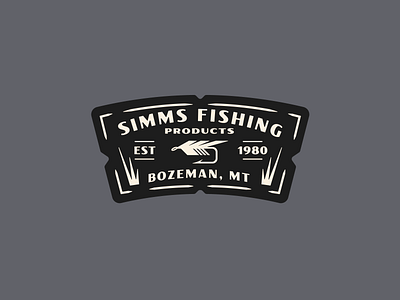
Find your next designer today
- For designers
- Hire talent
- Inspiration
- Advertising
- © 2024 Dribbble
- Freelancers

COMMENTS
Creative writing is an art form that transcends traditional literature boundaries. It includes professional, journalistic, academic, and technical writing. This type of writing emphasizes narrative craft, character development, and literary tropes. It also explores poetry and poetics traditions.
1. Explore the creative writing possibilities. Spend some time investigating your options in creative writing, including the styles and categories that most interest you, the different techniques you can practice, and what it feels like to express your ideas in writing. Understanding the full scope of what's possible gives you the freedom to ...
Creative writing is any writing that goes outside the bounds of normal professional, journalistic, academic, or technical forms of literature, typically identified by an emphasis on narrative craft, character development, and the use of literary tropes or with various traditions of poetry and poetics.Due to the looseness of the definition, it is possible for writing such as feature stories to ...
5 Key Characteristics of Creative Writing. Creative writing is marked by several defining characteristics, each working to create a distinct form of expression: 1. Imagination and Creativity:Creative writing is all about harnessing your creativity and imagination to create an engaging and compelling piece of work.
Types of Creative Writing. Examples of creative writing can be found pretty much everywhere. Some forms that you're probably familiar with and already enjoy include: • Fiction (of every genre, from sci-fi to historical dramas to romances) • Film and television scripts. • Songs. • Poetry.
Creative writing is the celestial dance of words, an art form that transcends the ordinary to forge literary constellations that illuminate the human experience. At its core, creative writing is a cosmic exploration of imagination, a journey into the uncharted realms where storytelling becomes a vehicle for self-expression, creativity, and ...
Creative Writing 101. Creative writing is any form of writing which is written with the creativity of mind: fiction writing, poetry writing, creative nonfiction writing and more. The purpose is to express something, whether it be feelings, thoughts, or emotions. Rather than only giving information or inciting the reader to make an action ...
The dictionary definition of creative writing is that it is original writing that expresses ideas and thoughts in an imaginative way.[1] Some academics will also define it as the art of making things up, but both of these definitions are too simplistic in the grand scheme of things.
A lot falls under the term 'creative writing': poetry, short fiction, plays, novels, personal essays, and songs, to name just a few. By virtue of the creativity that characterizes it, creative writing is an extremely versatile art. So instead of defining what creative writing is, it may be easier to understand what it does by looking at ...
If you're interested in the world of creative writing, we have eight fantastic exercises and activities to get you started. ️🤩 Don't miss on the joy of Creative Writing: here are 8 ways to get started. Click to tweet! 1. Use writing prompts every week. Coming up with ideas for short stories can be challenging, which is why we created a ...
Creative writing is as much about showing as it is about telling. Practicing descriptive writing brings your characters, settings, and scenes to life. Try to engage all the reader's senses — sight, sound, smell, taste, and touch. This helps to create an immersive experience for your reader and make your writing more memorable.
The eight elements of creative writing that are used in short stories and novels are character development, setting, plot, conflict, theme, point of view, tone, and style. Some of these elements ...
Creative Writing is a form of art that allows people to express their thoughts, ideas, and emotions through the written word. It is a mode of self-expression that combines imagination with linguistic skills to create compelling narratives, poems, and other forms of literature. A Statista survey found that 76,300 Authors, Writers and Translators ...
What is creative writing? The answer can be simple, but breaking it down is far more useful. Learn more and gain some insightful tips for yourself, as well!
Creative writing covers more than just fiction, or even just novels. Here's a quick rundown of some types of creative writing you might encounter. 1. Novels. Novels (which fall under the 'fiction' umbrella) are a type of creative writing where the reader follows a character or characters through a plot.
Request Info. Creative writing is any kind of writing that employs creative literary or poetic techniques in the service of either fiction or non-fiction writing. It involves original composition and expressiveness of the individual author. Ask ten creative writing professors what creative writing is, and you'll get eleven different answers.
3. Throw perfection to the wind. Separate your writing from your editing. Anytime you're writing a first draft, take off your perfectionist cap. You can return to editor mode to your heart's content while revising, but for now, just write the story. Separate these tasks and watch your daily production soar.
The central conflict molds the shape of the journey your characters will take. Dialogue: Good dialogue performs all sorts of functions in creative writing. It defines your characters' voices, establishes their speech patterns, and reveals key information without being needlessly expository. Realistic dialogue also exposes the inner emotions ...
Literary techniques you develop with writing plays and screenplays can include satire, motif, dramatic irony, allusion, and diction. 5. Personal essays. Focusing on the author's life and experiences, a personal essay is a form of creative non-fiction that almost acts as an autobiography.
O'Reilly members experience books, live events, courses curated by job role, and more from O'Reilly and nearly 200 top publishers. 1 What is Creative Writing? Defining Creativity Creativity does not have an authoritative definition. However, most of us recognize creative acts, ideas and arts. When we visit the National Gallery ….
Creative Writing Definition of genre Creative writing, a form of artistic expression, draws on the imagination to convey meaning through the use of imagery, narrative, and drama. This is in contrast to analytic or pragmatic forms of writing. This genre includes poetry, fiction (novels, short stories), scripts, screenplays, and creative non-fiction.
Creative Writing is a catalyst that sparks our creativity and empowers us to breathe life into our ideas on the page. With Oxford Summer Courses, aspiring writers aged 16-24 can embark on an extraordinary journey of creative expression and growth. Immerse yourself in the captivating realms of Oxford and Cambridge as you explore our inspiring ...
Spread the loveWriting is a creative art form. To be creative, individuals need to have a strong sense of imagination. In an era where digital media seem to be dulling everything down, kids can still be creative and conjure up extraordinarily surreal and imaginative things. However, teaching creative writing to young kids can often be tricky. There are a lot of precautions that educators need ...
To start infusing research into your creative works, begin with the basics. Understand the core elements of your story—setting, characters, and plot—and identify what you need to research.
AI and the creative industry I've been a techno-optimist throughout the entirety during AI's rise, however recently I've been listening to the other side of the argument especially in the creative writing industry. The writers despise AI, they enforce a zero tolerance policy towards its use at all during a writing or creative process.
Find Top Designers & Creative Professionals on Dribbble. We are where designers gain inspiration, feedback, community, and jobs. Your best resource to discover and connect with designers worldwide.